Met 'The Beast' door Noord-Amerika
The circle is complete
by Isabelle Demaeght, August 11, 2022
Canada is yet another country with a different culture. It feels more European than the United States. I dream of delicious salmon (smoked or not), so during our first stop Adriaan buys a portion of smoked wild salmon. We don't pay attention, and it turns out to be a salmon marinated in tequila and honey, only then smoked. In my dream (and from our smoker!) it's tastier.
Our second stop in Canada is a highlight. We are near a river. For Adriaan there is work to be done: we can do our laundry ourselves. Someone shows us the way to a lonely lake, a few miles further. At the moment we arrive the last four visitors are leaving. We take the opportunity to make a splash in the water. An unexpectedly pleasant experience.
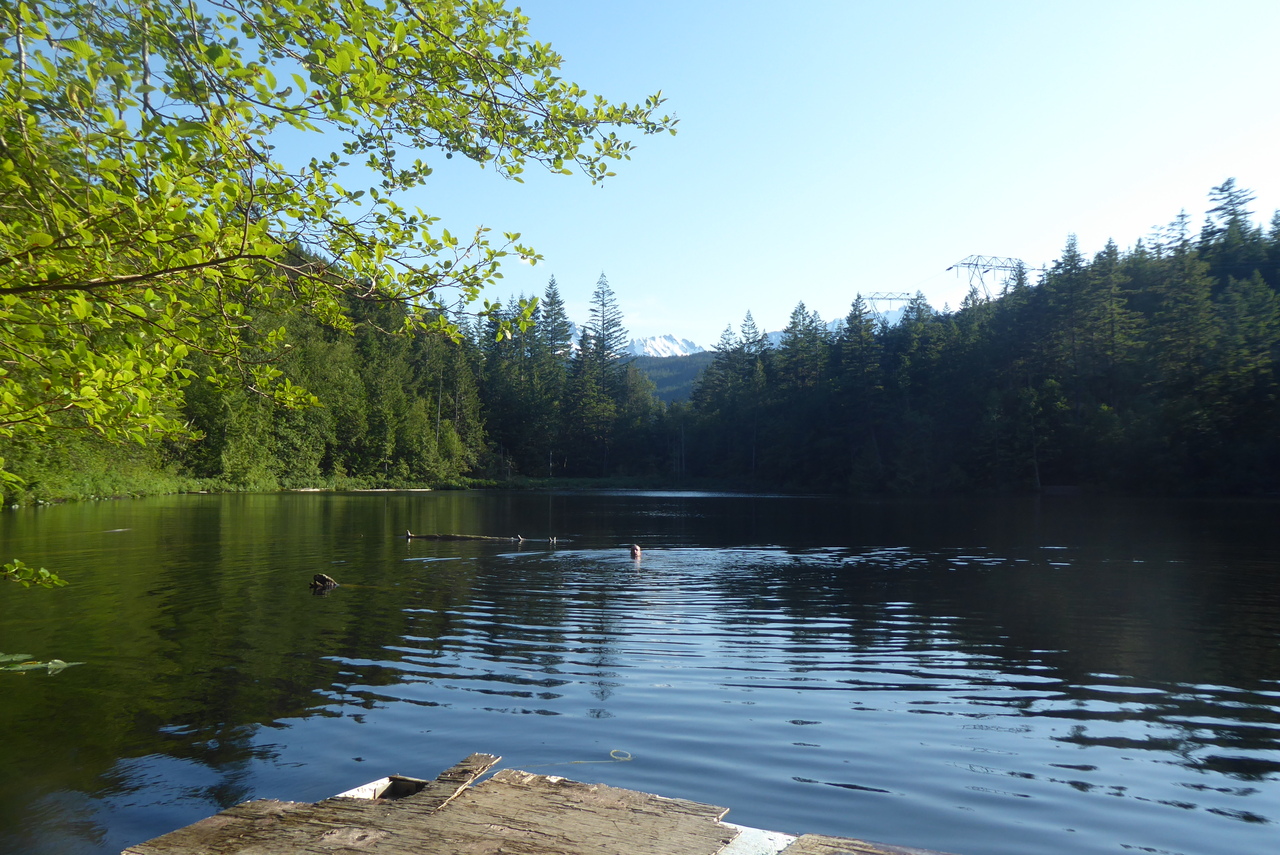
Tomorrow we will start on the Alaska Highway. (Alaska means "Great Land".) In 1942, following the bombing of Pearl Harbor, 16,000 U.S. Army soldiers built this road. The 2232 kilometers (1400 miles) link in unexplored and rugged terrain (across Canada) was built in 8 months and 12 days.
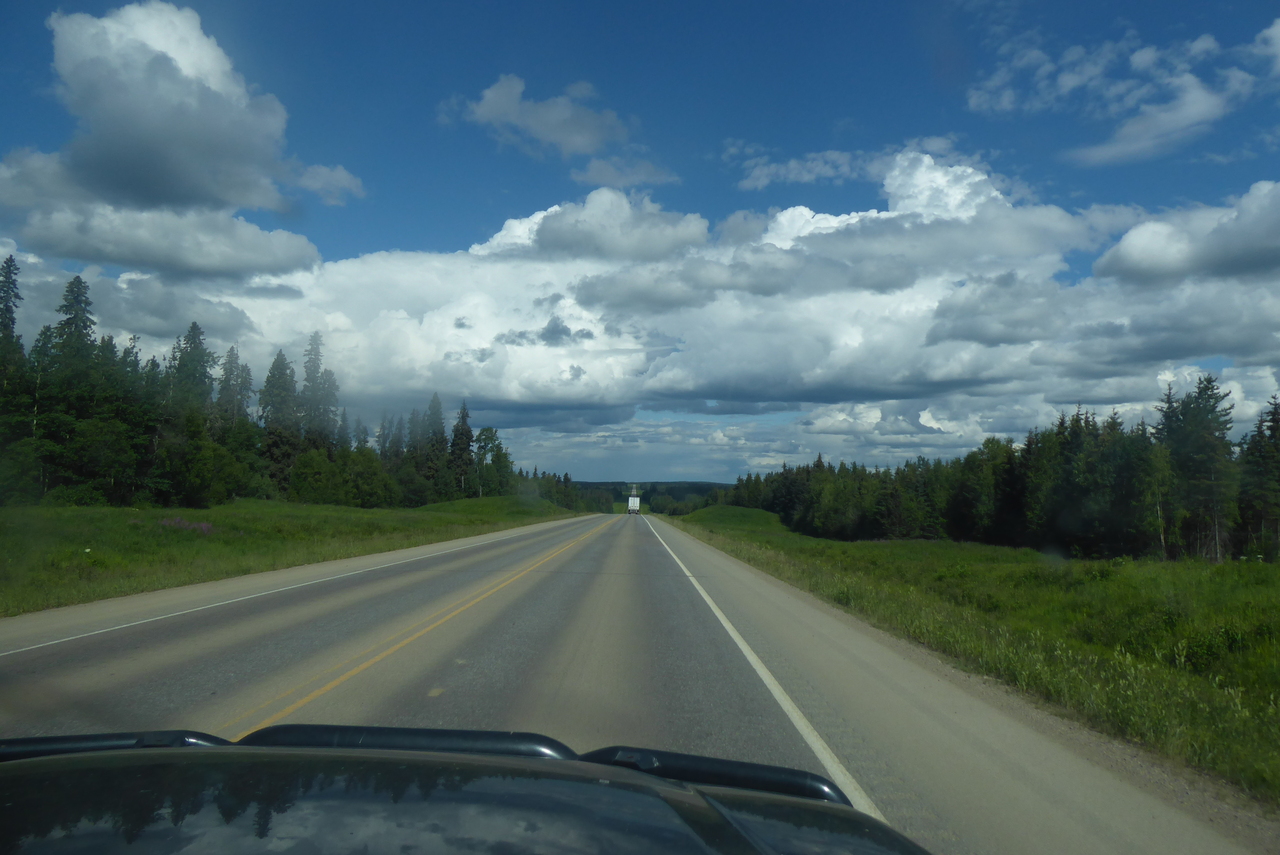
We drive to the Alaska Highway via a shortcut. Not shorter in time, because there are many road works. A dam is being built to generate electricity. When we pause, within 10 minutes we meet a young man who completely disagrees with this project. A little later we meet an enthusiastic man and woman, working within this project, who think it is super.

We make several consecutive days of many miles until I reaffirm that the journey is the destination. I don't have to arrive at the northernmost point in Alaska. We have already arrived, because we are traveling.
There is an incredible amount of water here. Apparently, the spring was also wet and it makes that now just about all the mosquitoes in the world are concentrated here. I have not experienced before a swarm of mosquitoes coming at you when you open the car. They sting and suck our blood.
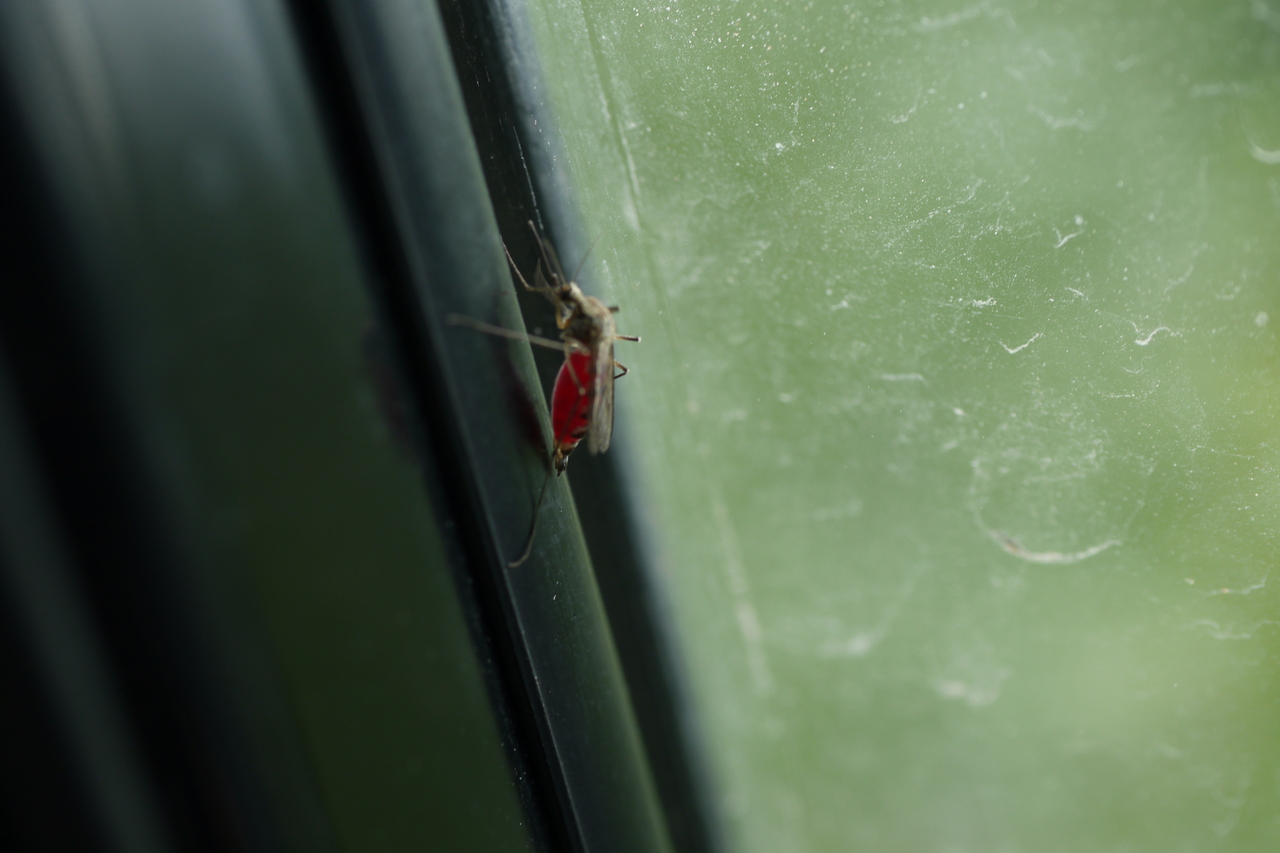
Adriaan has a theory about it: you have to let the mosquito do its thing. The mosquito first injects anticoagulants into your skin, and you notice that. If you swat the mosquito before it sucks, those anticoagulants stay behind, and that irritates. Adriaan thinks it's better to let the mosquito suck your blood, so that most of the anticoagulants also disappear from your skin. I wake Adriaan up in the night because I clearly let the mosquitoes do their thing: my arm, which is outside the sleeping bag, is pretty much eaten and the tent is full of dinner guests. If a swatted mosquito leaves a bloodstain, it was guilty. Only a few die innocently, the tent wall is full of bloodstains.
We drive more north and the nights get colder. While everyone in Europe is suffering from the heat, we have cloudy, cold nights and rainy days.
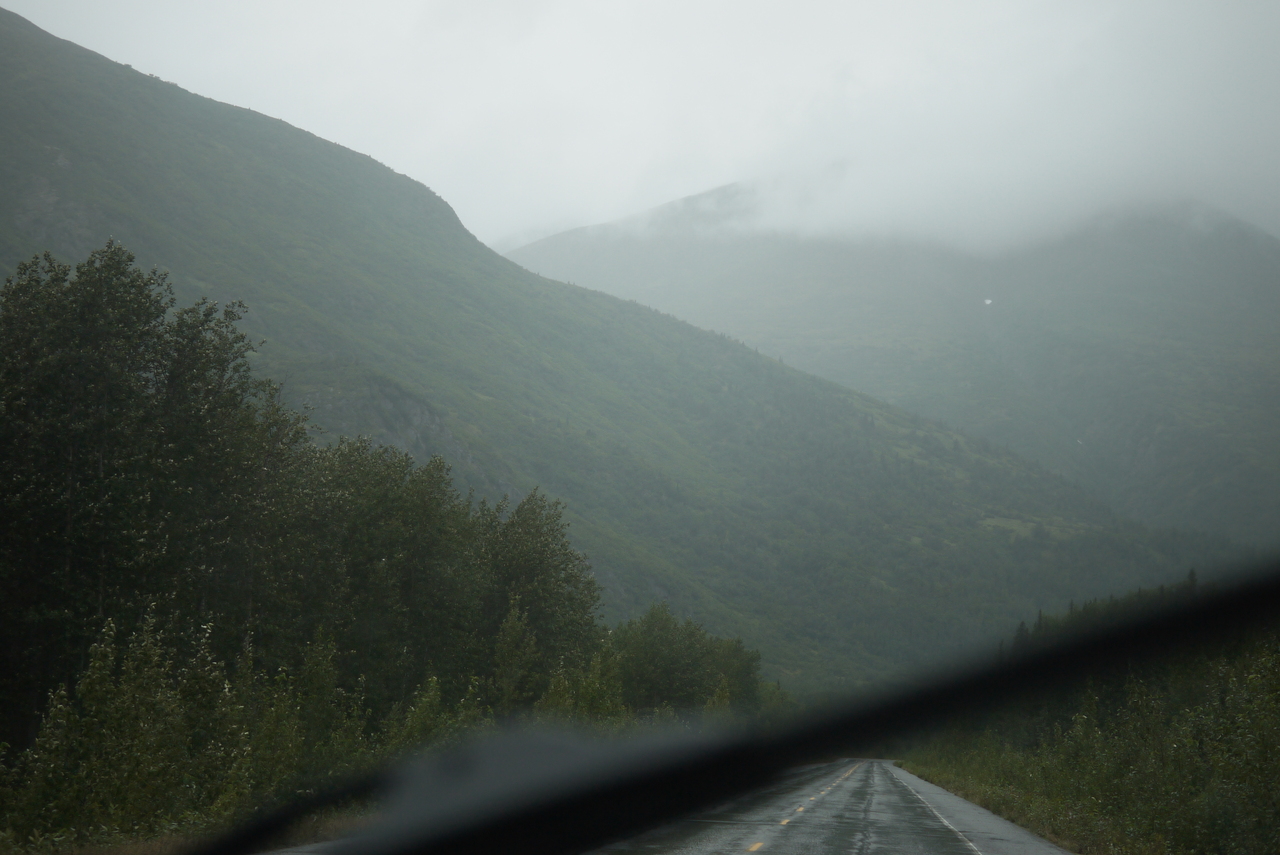
Along the way, we meet Jennie who is alone by the side of the road with two flat tires and Adriaan helps her by fixing one of the tires so she can reach a safe haven. Adriaan has saved another life. We are visited by two enthusiastic families from Fort Nelson who come to the wilderness every weekend to cross country together. They each have their own vehicle and seek out the most remote places. They give us some tips for the next few days.
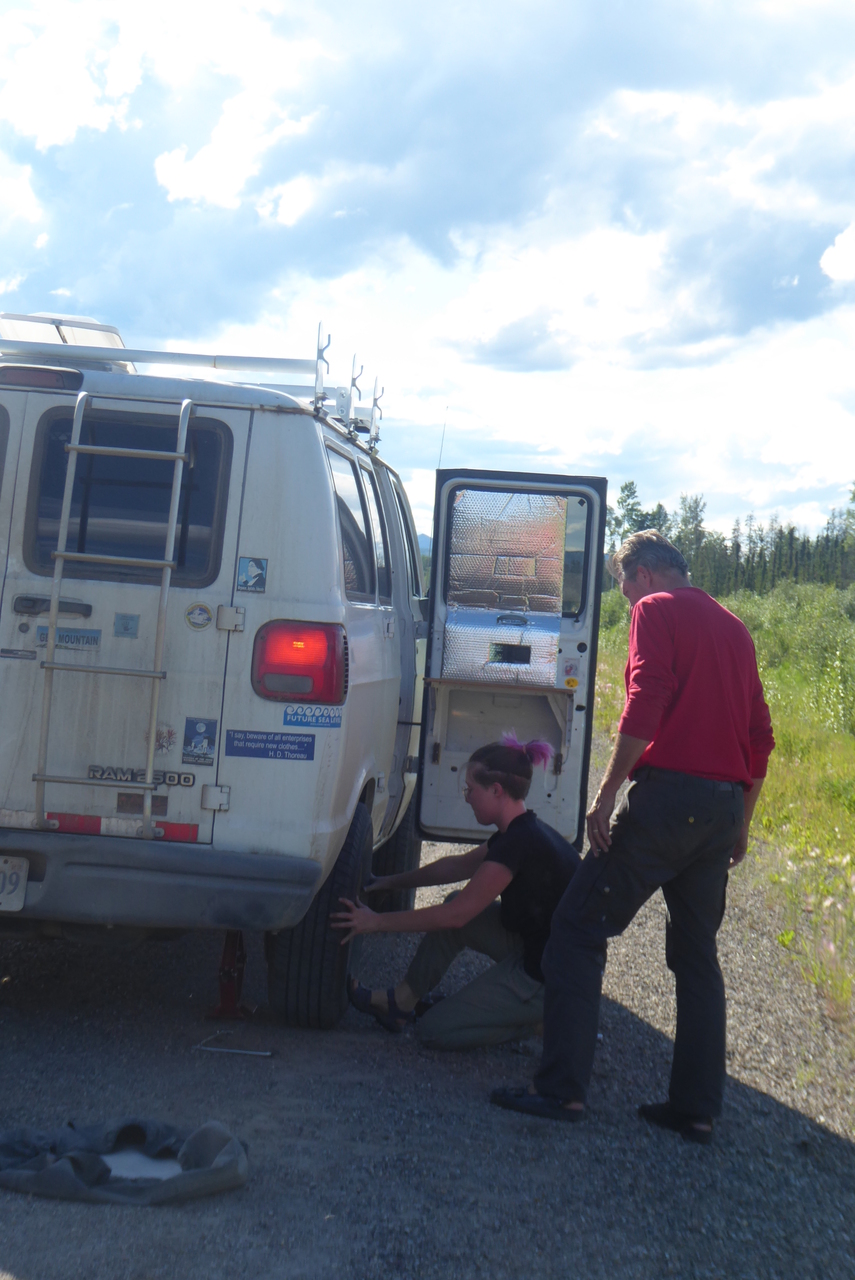
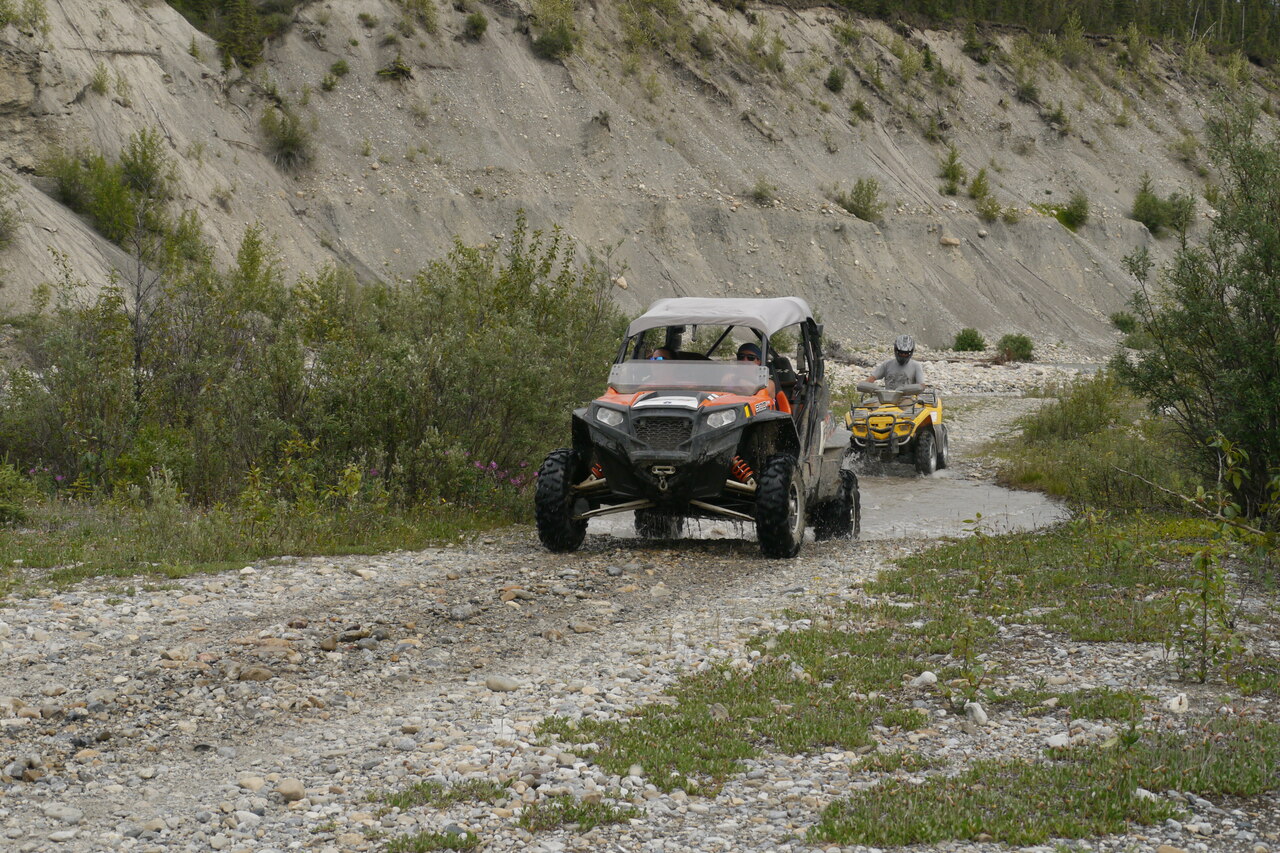
We are also introduced to the Canadian outdoors: bears, skunks, moose, elk, mountain goats and bison. As soon as we leave the pavement to find somewhere to sleep, we are in the wilderness. At first it feels strange, like you could be attacked by a bear at any moment. But we get used to that too. After a few days we sometimes forget that our garbage bag must be inside at night. And the bear spray is not always between the mattresses. (Some women have a small can of pepper spray in their handbag - against intrusive bears we have a big can of pepper spray with a 30 meter range). The black bears we see along the side of the road continue to have a high petting factor, I think. The further north we go, the shorter the nights get. It doesn't get dark until after 11 p.m. and at 4 a.m. it's light again. But we also get used to that.
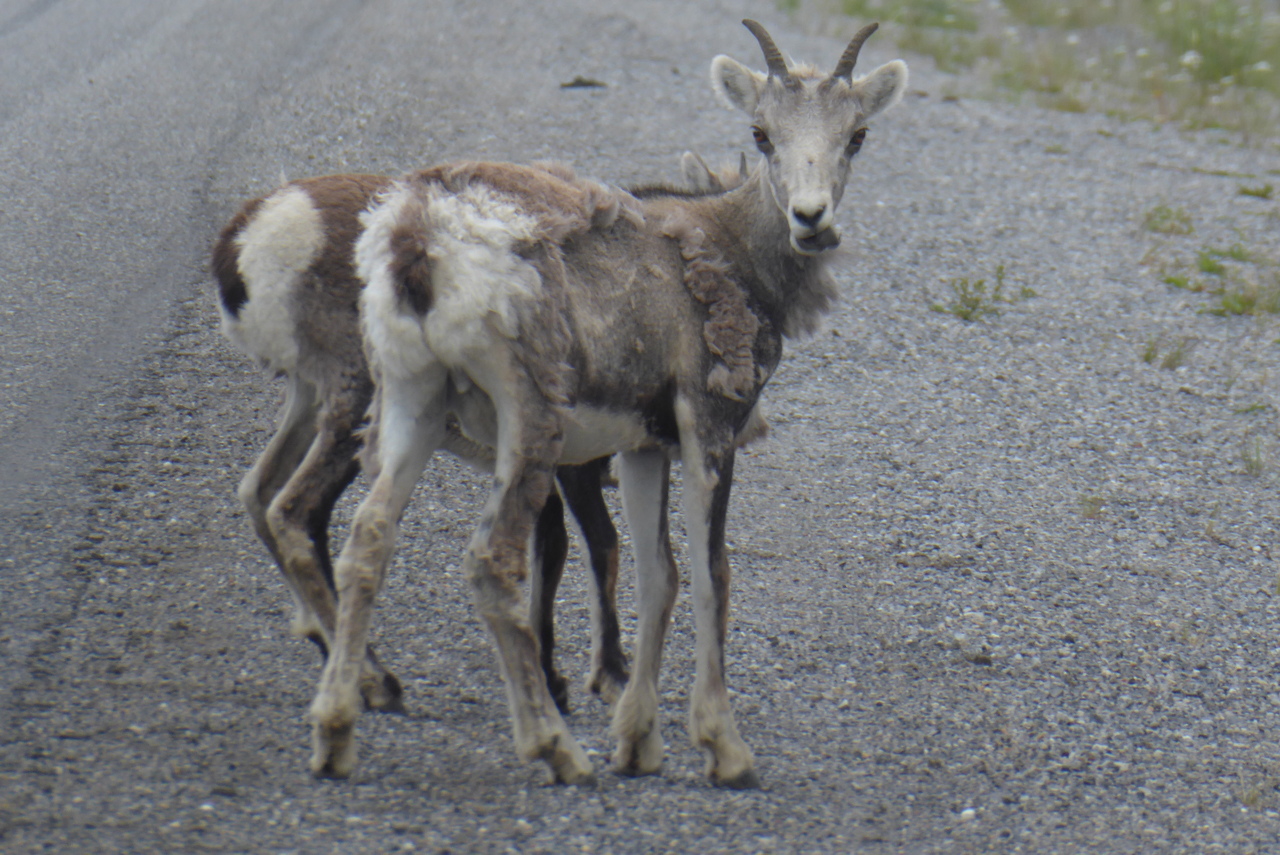
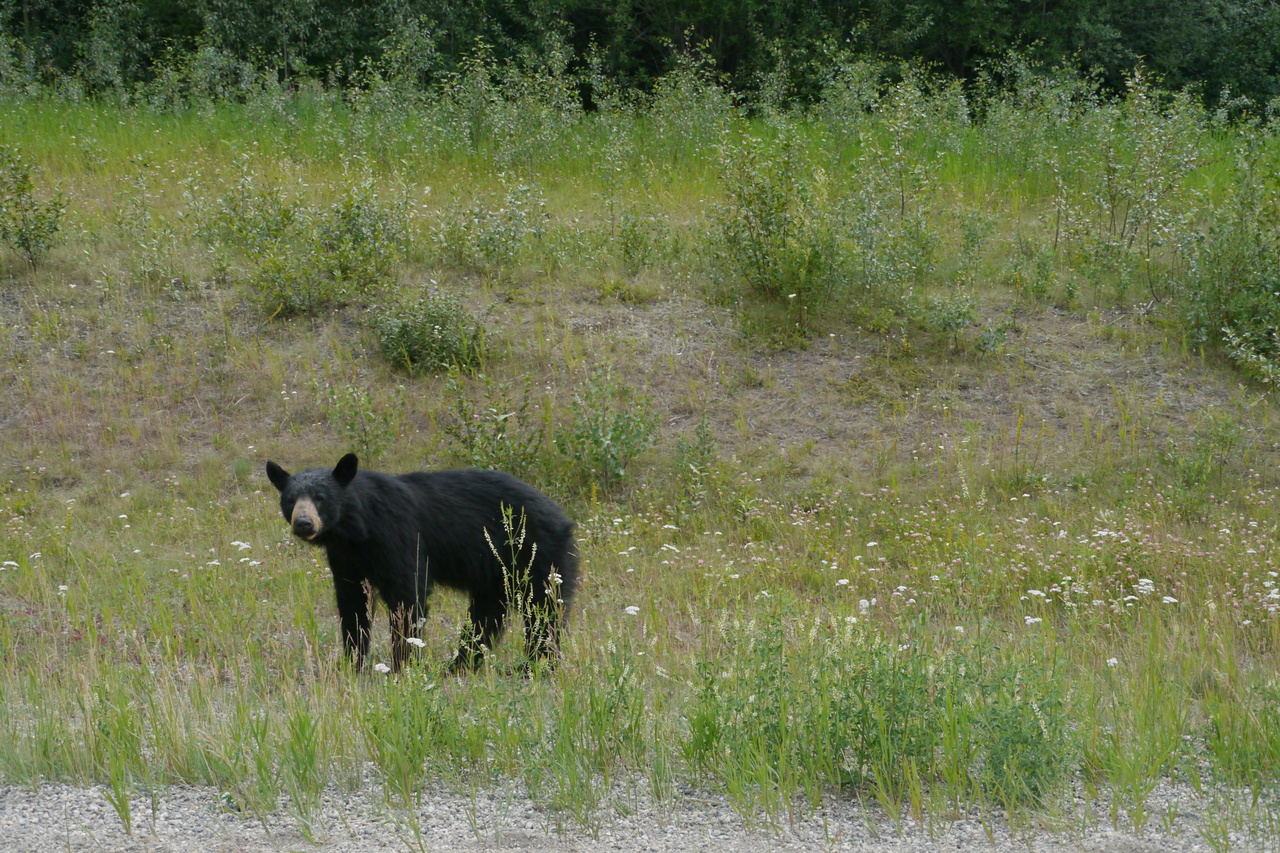
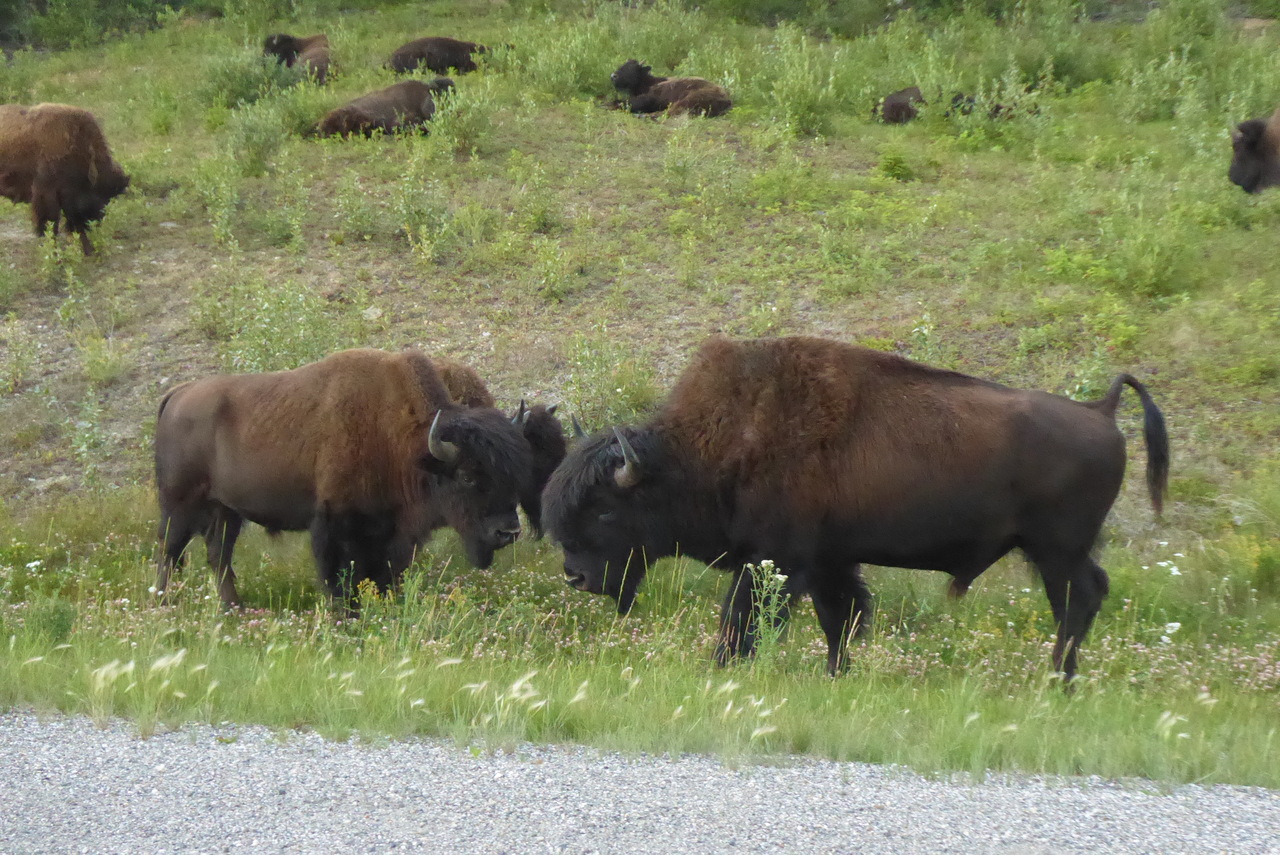
We take a turn off the Alaska Highway to arrive in Skagway via The Gold Rush Route. The town with less than 1000 inhabitants is situated in a fjord and is a small piece of Alaska in Canada. I (thankfully) stop by the visitor center 100 kilometers before Skagway. "I wouldn't do it today," says the friendly person in charge, "there are 3 cruise ships arriving. That means 12,000 passengers, many of whom are disembarking. Only one cruise ship is coming the day after tomorrow." By chance we find a good camping spot and use "3 cruise ships" as an excuse to do nothing for the day.
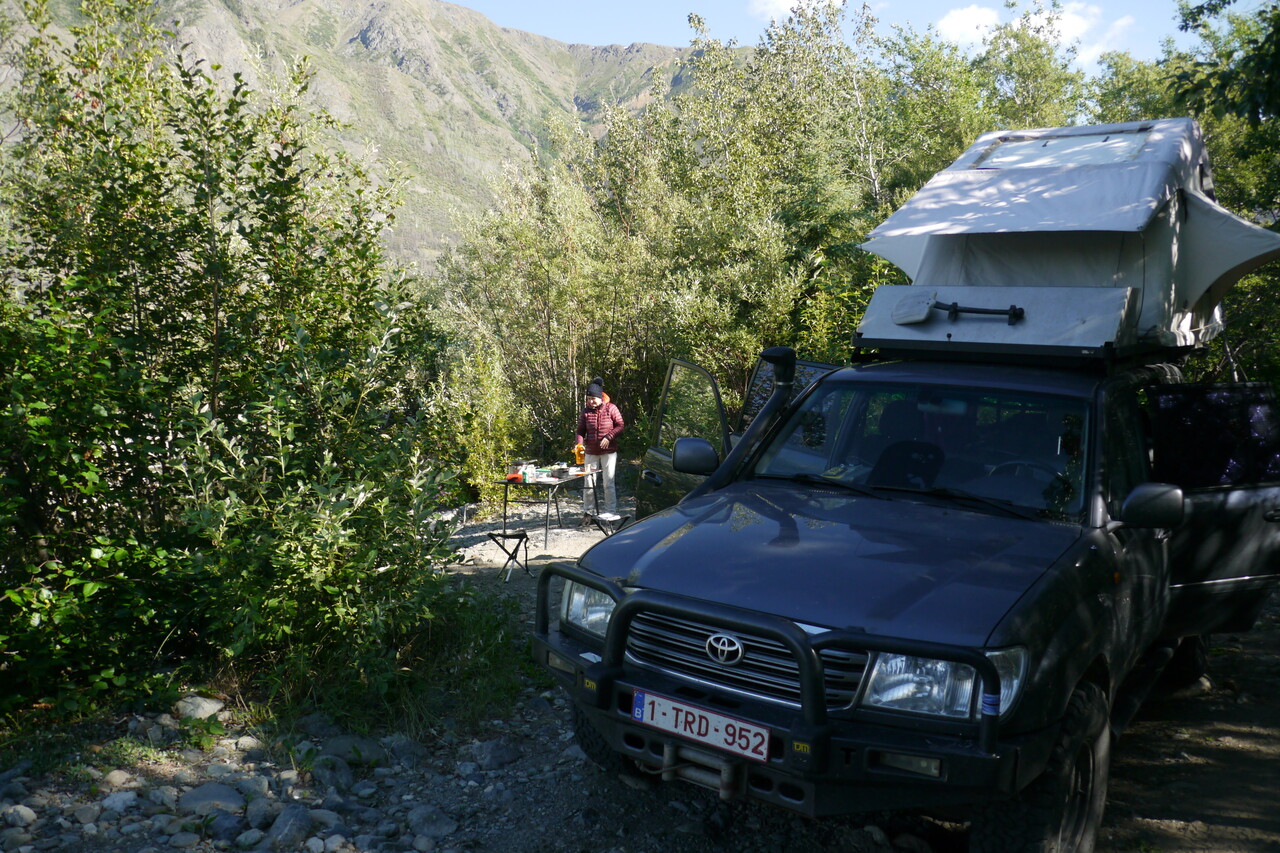
Less than 150 years ago, the search for gold began here for about 30,000 men. In the local museum we find explanations of how difficult their lives must have been. Now Skagway looks more like an amusement park for the cruise ship day-trippers.
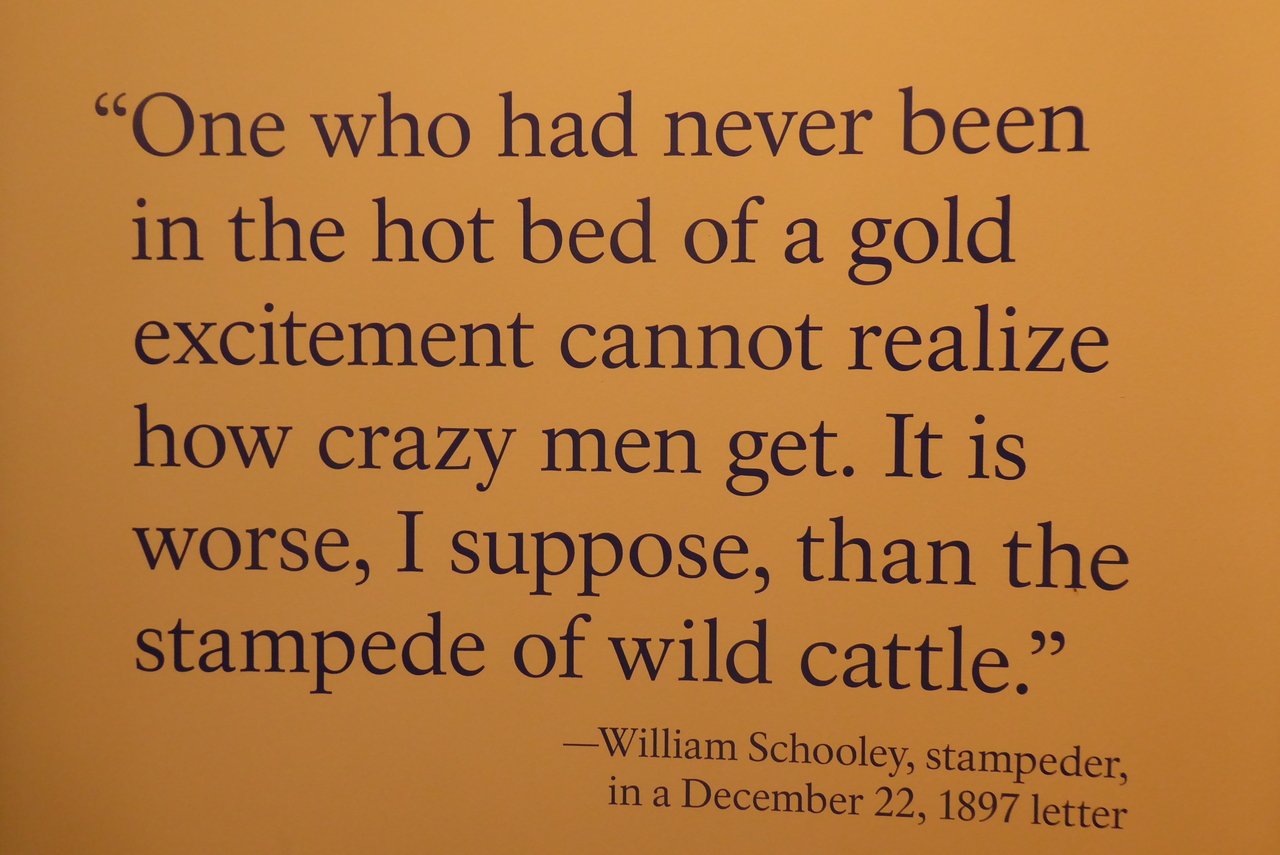
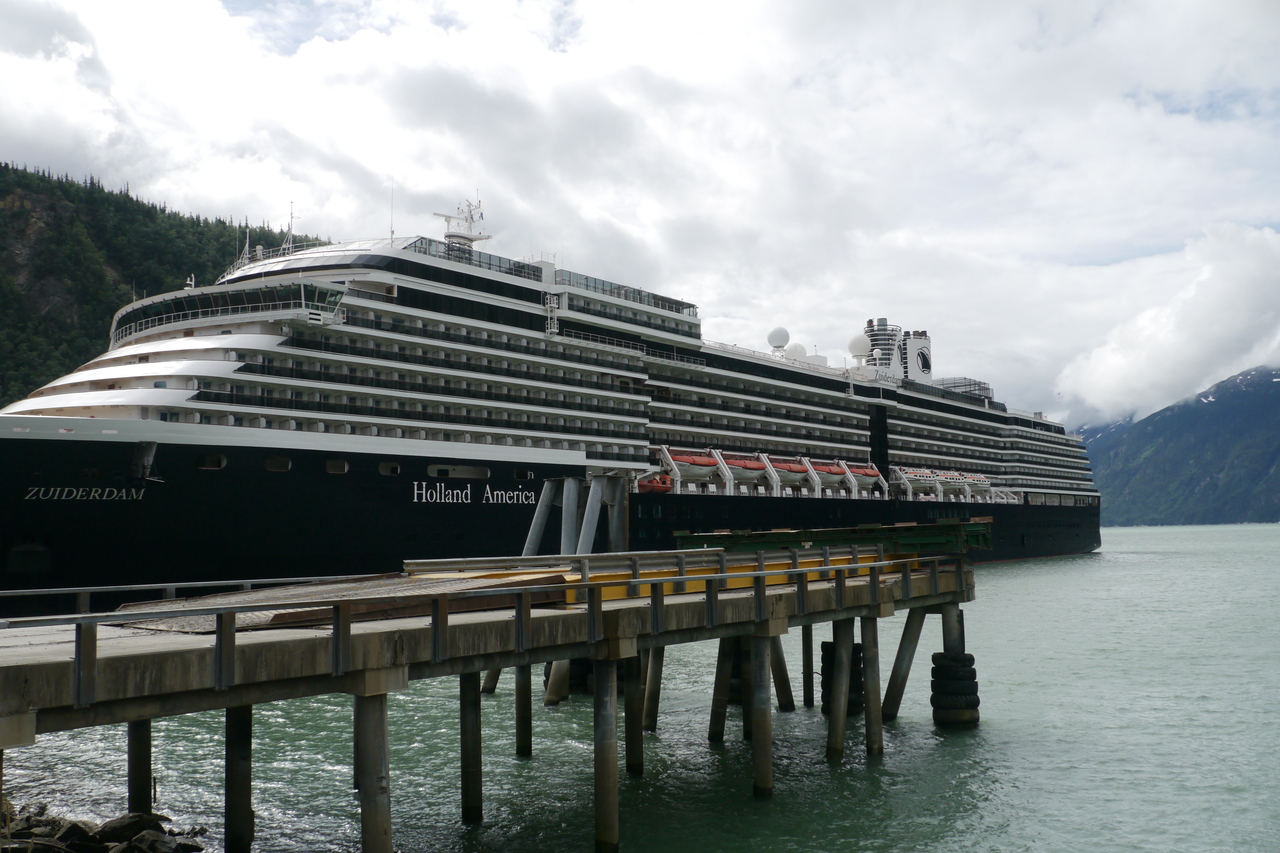

We get acquainted with Jim and Robin with their super easy trailer. They are very proud and enjoy giving us a tour of their prototype. I now also understand why we see so many trailers and RVs along the way. Robin tells us that after Corona they (and Americans in general) still don't dare fly because of the small space in an airplane. The pandemic has also taken its toll here. Many stores and campgrounds along the highway are closed for good. Further north, there are fewer people anyway, which makes the prices of EVERYTHING very high. We store and take only the most necessary things.
In Watson Lake we make a stop for the famous Signpost Forest: in 1942, a homesick soldier left a nameplate of his home base here. Since then his example has been followed by countless others: there are now some 80,000 signs from all over the world.
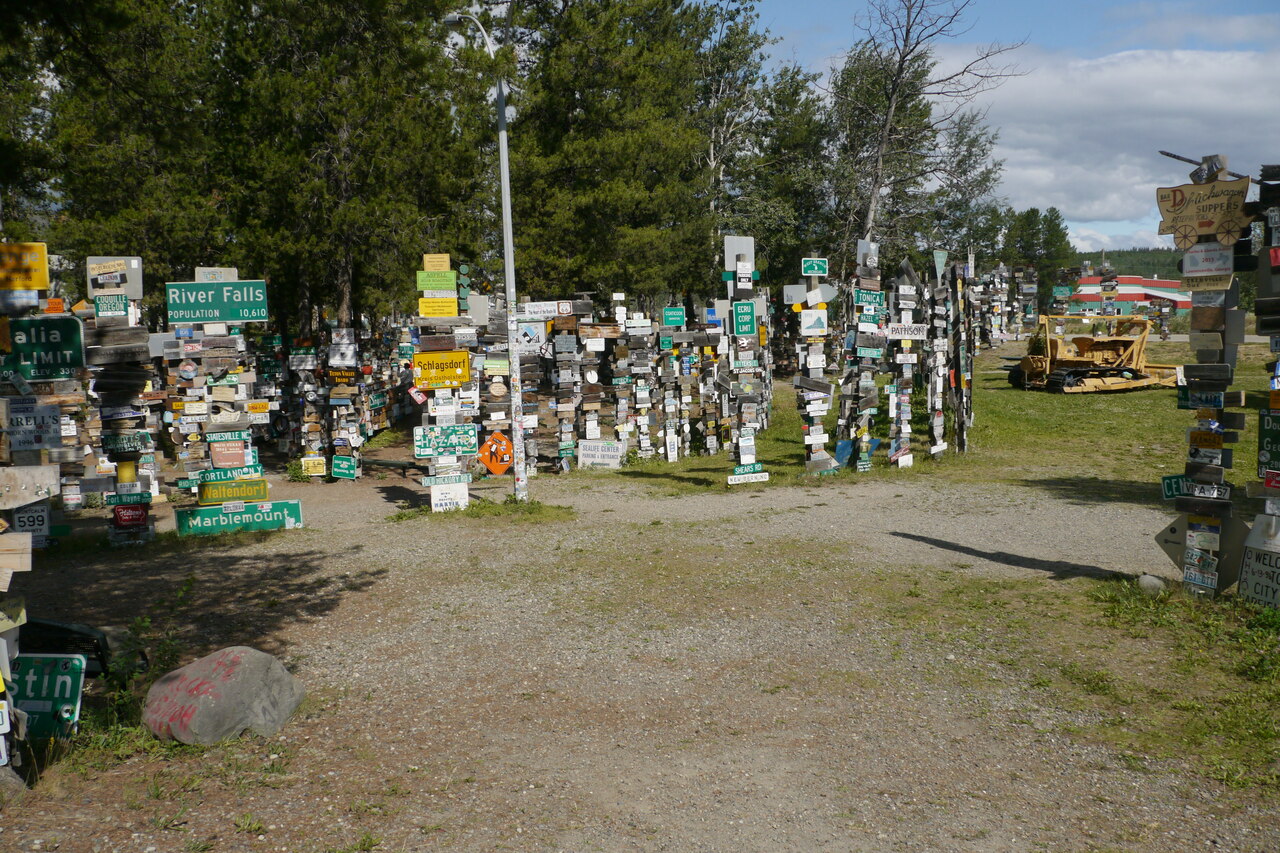
We arrive in Whitehorse. I had looked forward to a decent hotel and a visit to the hairdresser's in this last Canadian city before Alaska. Neat hotels are not to be found at a reasonable price and at every salon I walk into I get the same answer: "we can help you in August or September".
On July 27 our goal is reached and we arrive in Alaska!
From Tok we go to Valdez on the Gulf of Alaska. On the way, we make a detour to the largest natural park in Alaska: Wrangell - St. Elias. A road with very nice views of several glaciers. And... a free campground that we can't pass up. Our surprise is great when the next day after a hike we suddenly hear: “Kijk, een Belgische plaat!” (Look, a Belgian license plate!). We meet Dirk and Liesbeth from Limburg (our home province, of all places) and decide to invite them for a Belgian meal. It turned out to be a wonderful evening with meatballs and cauliflower.
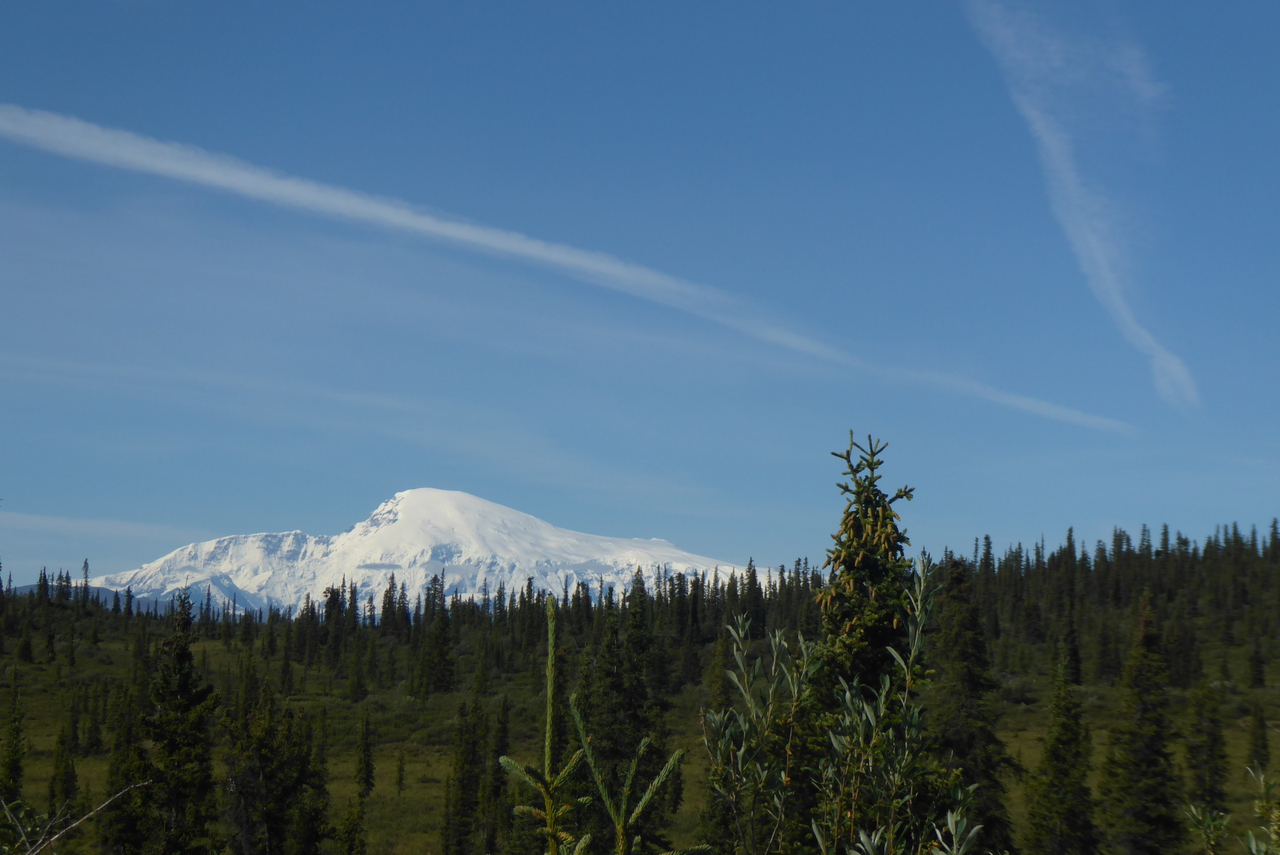
A day later we say goodbye and head for Valdez. This port is the terminus of the oil pipeline that runs through the wilderness from Prudhoe Bay, some 1,500 kilometers (1,000 miles) north. The Gulf of Alaska is always ice free and from here the oil is exported around the world. Alaska was part of Russian territory less than 200 years ago. In 1867, the United States bought this remote corner for a paltry $7.2 million. Gold and copper were found there. And now Alaska is just about the largest exporter of salmon. Since 1968, oil production has made it one of the richest states.
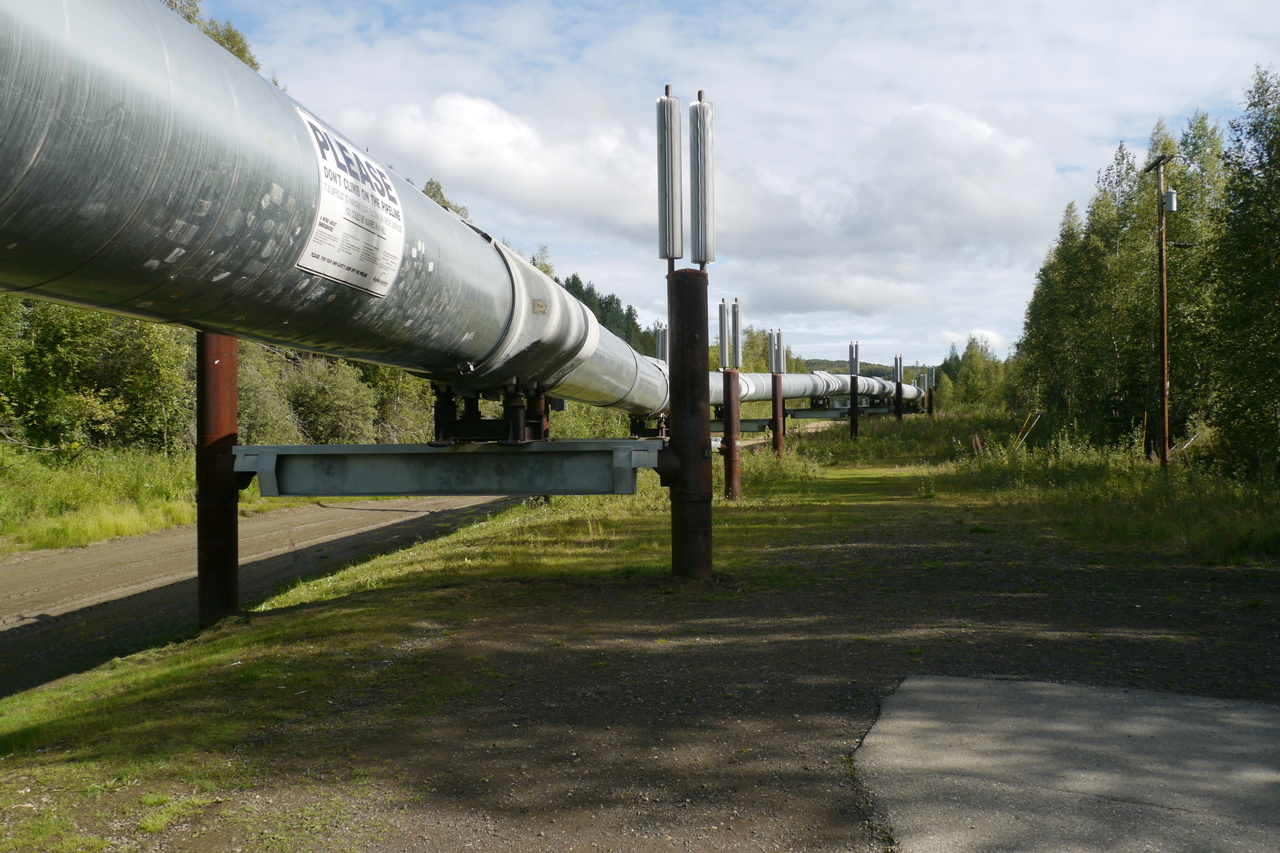
In Valdez, after a nice coffee and a shot of super fast internet, we go to see the salmon farm. At this time of year, adult salmon (2 years old) swim back from the sea through the rivers to their birthplace (here the farm) where they reproduce and die. The thousands (up to 22,000 a day) must wait until they can climb the fish ladder. Fat sea lions, fat gulls and beautiful bald eagles see this as an "All you can eat" buffet. Bears too, but they are elsewhere today. The spectacle is incredible. Then we find a spot in a dried up river bed, where Adriaan takes on a new task: hairdresser of the moment... When we wake up the next day it's raining cats and dogs, and we decide to move on.
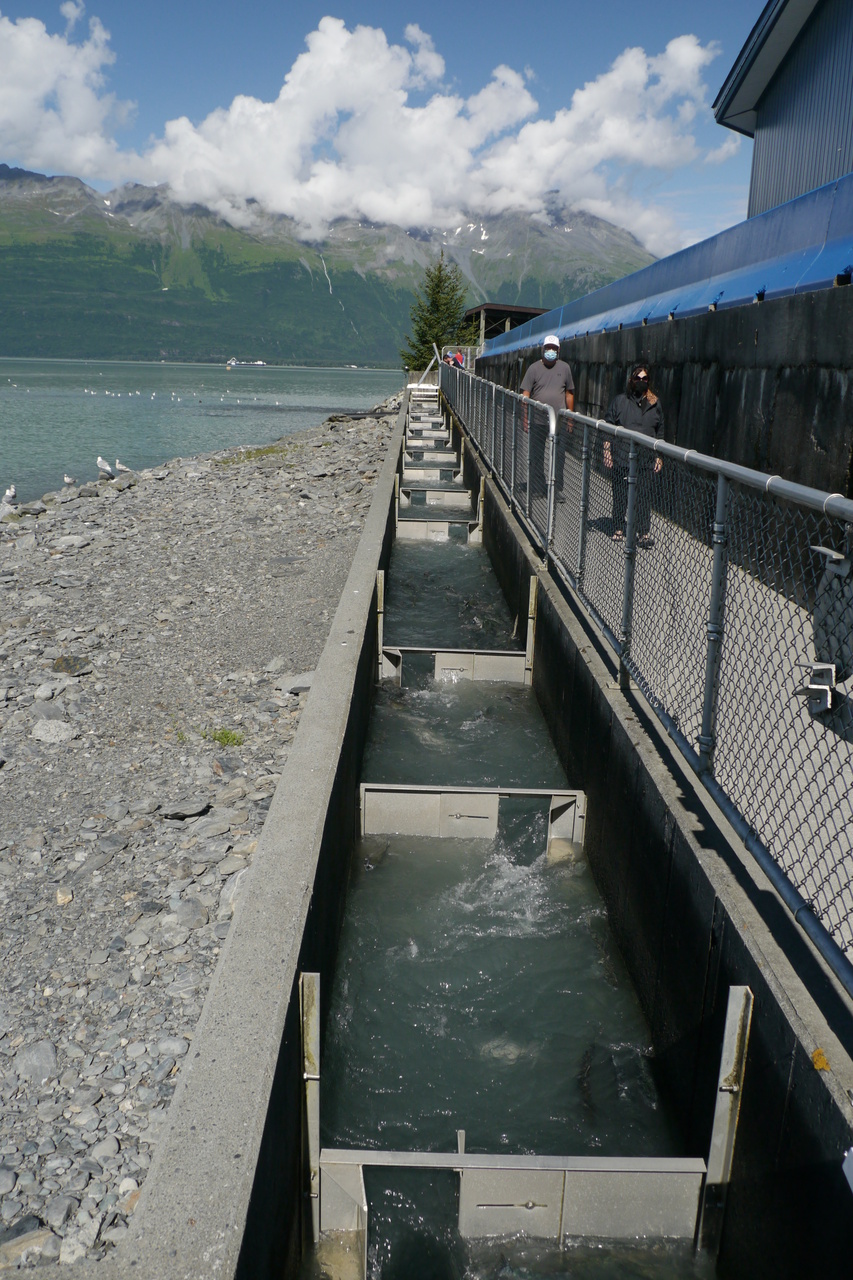

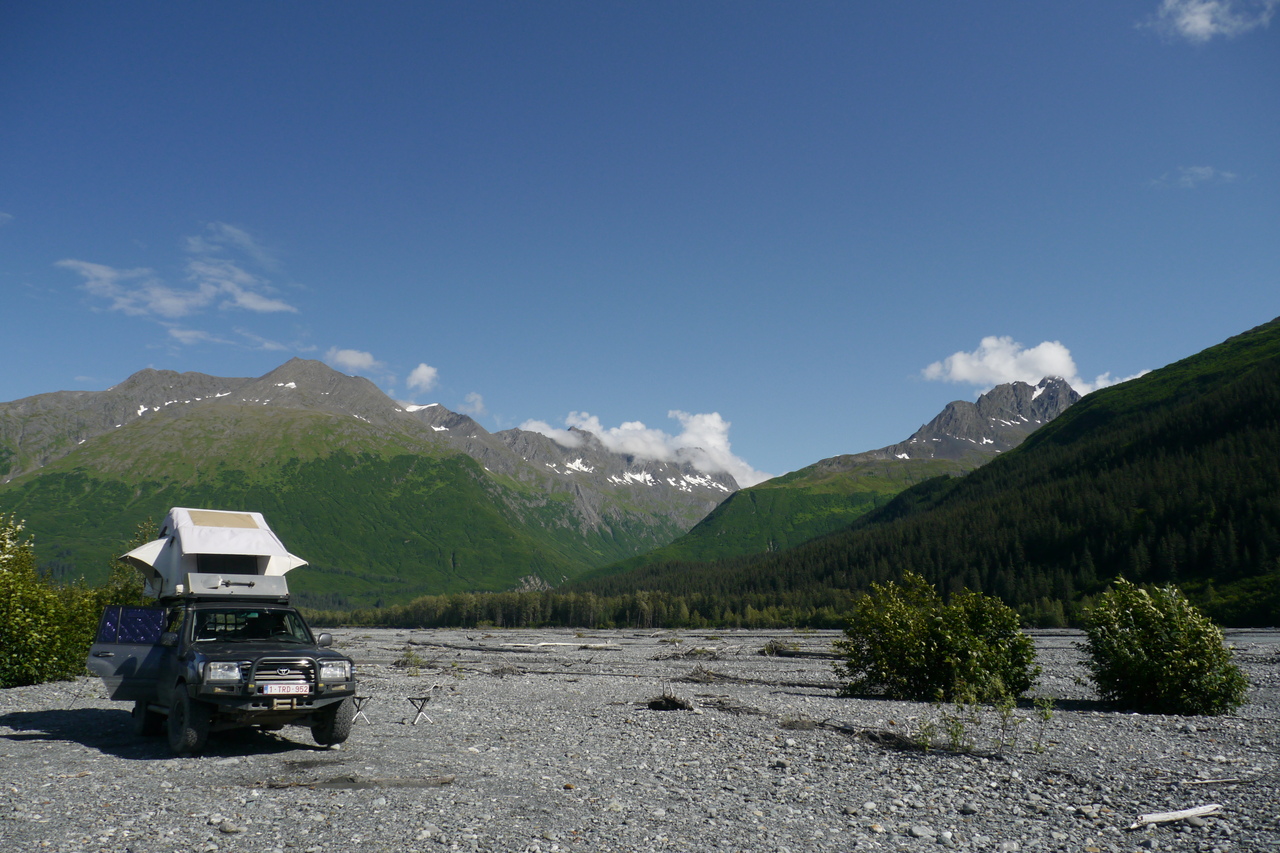
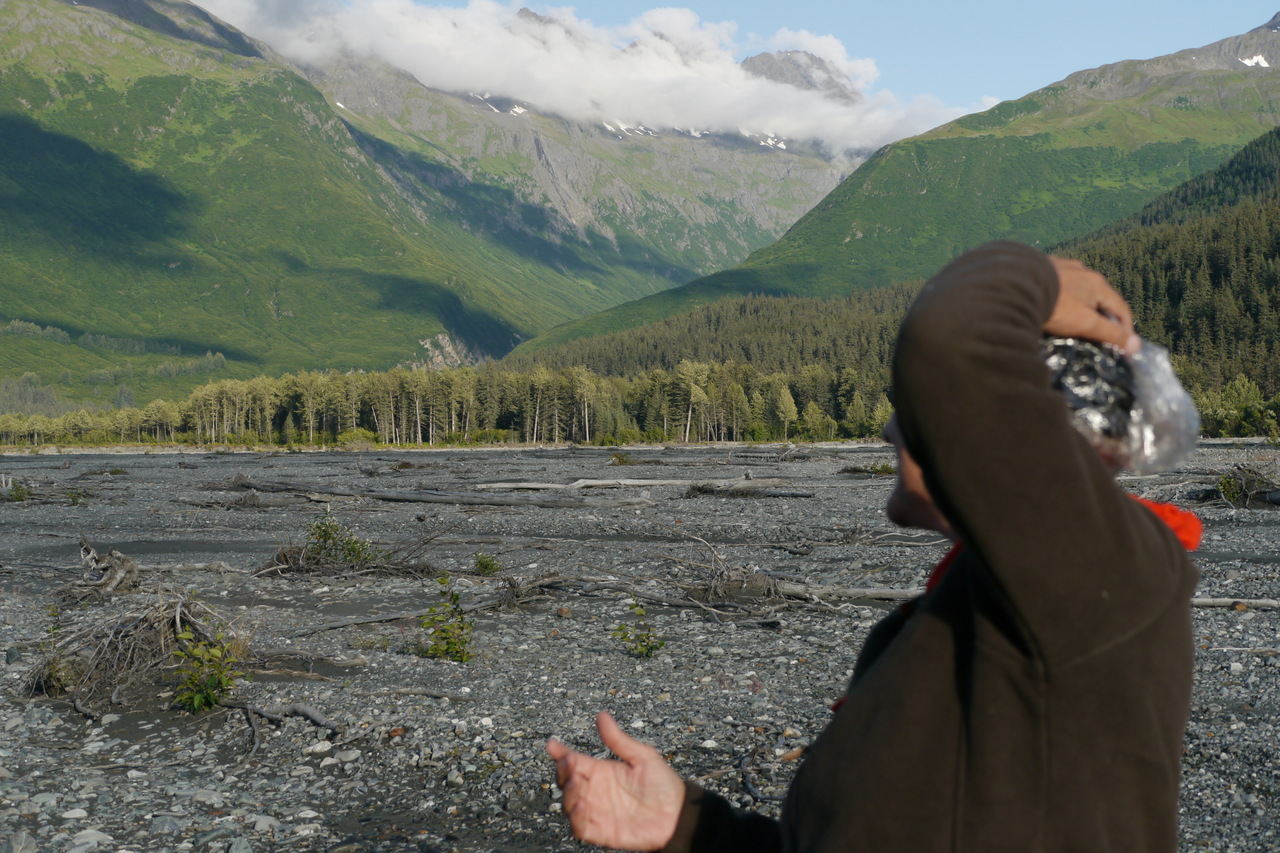
We arrive on the Kenai Peninsula where salmon fishing is in full swing. We meet people from Louisiana, California and Washington who come to this place every year to catch large quantities of salmon. That salmon is packaged by special companies, smoked or not, and sent to their home base. There are lots of sport fishermen. The fish caught cannot be sold (because then it is commercial catch). Sport fisherman Robert is kind enough to offer us a wild Sockeye salmon, because it is 'A Present From God'. And that present tasted good. Still swimming (tiredly) in the afternoon, on our plate in the evening.
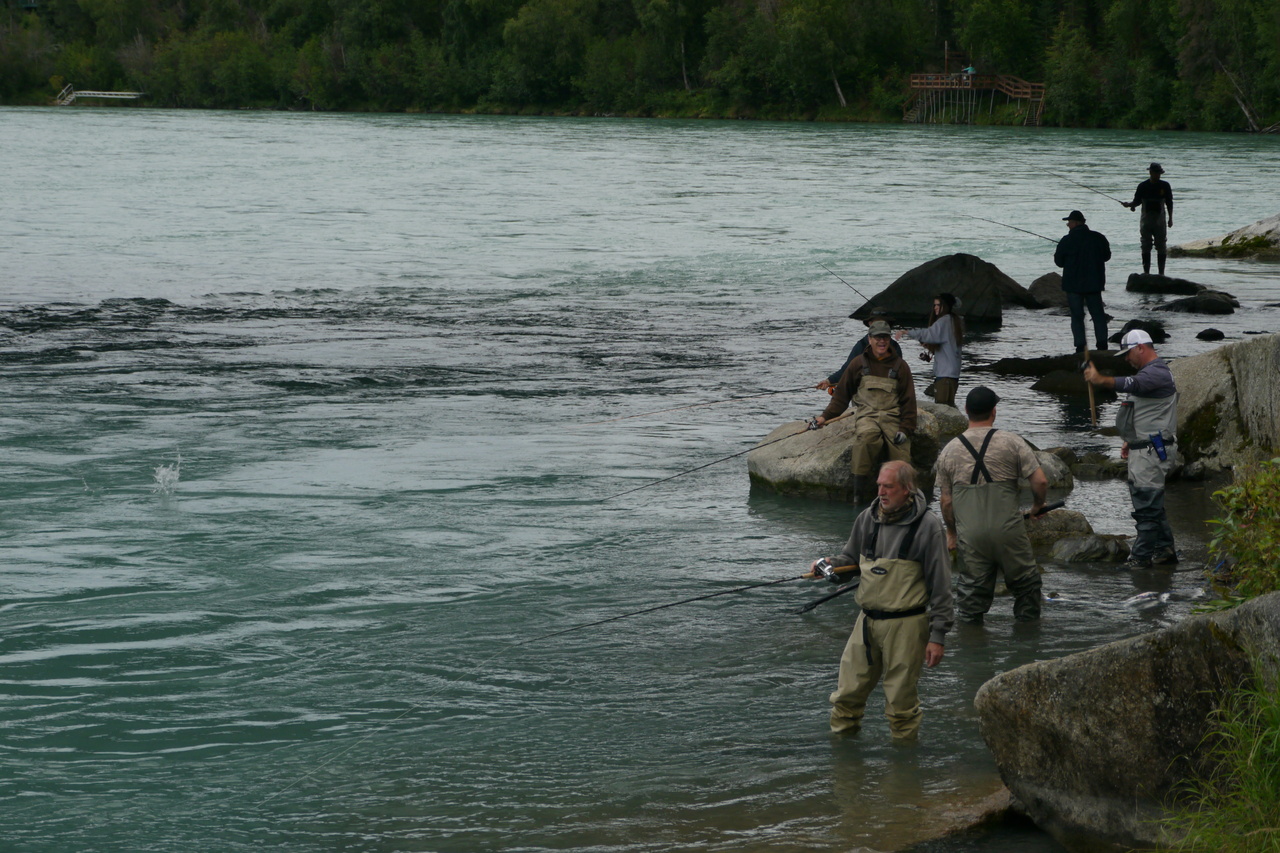
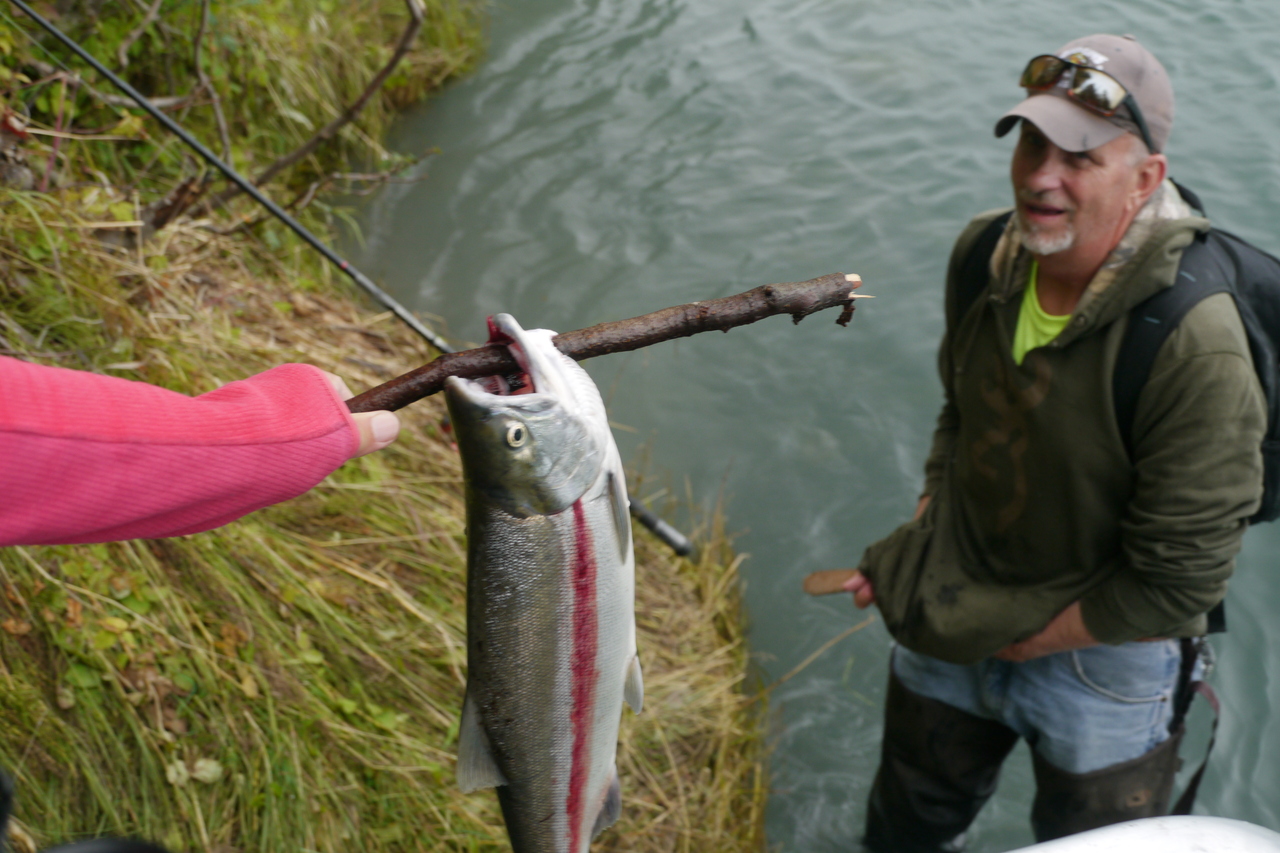
We make another stop for a short walk on the coast. Russian influences can still be felt. We visit the oldest functioning Orthodox church in Alaska and we meet a very friendly priest there.
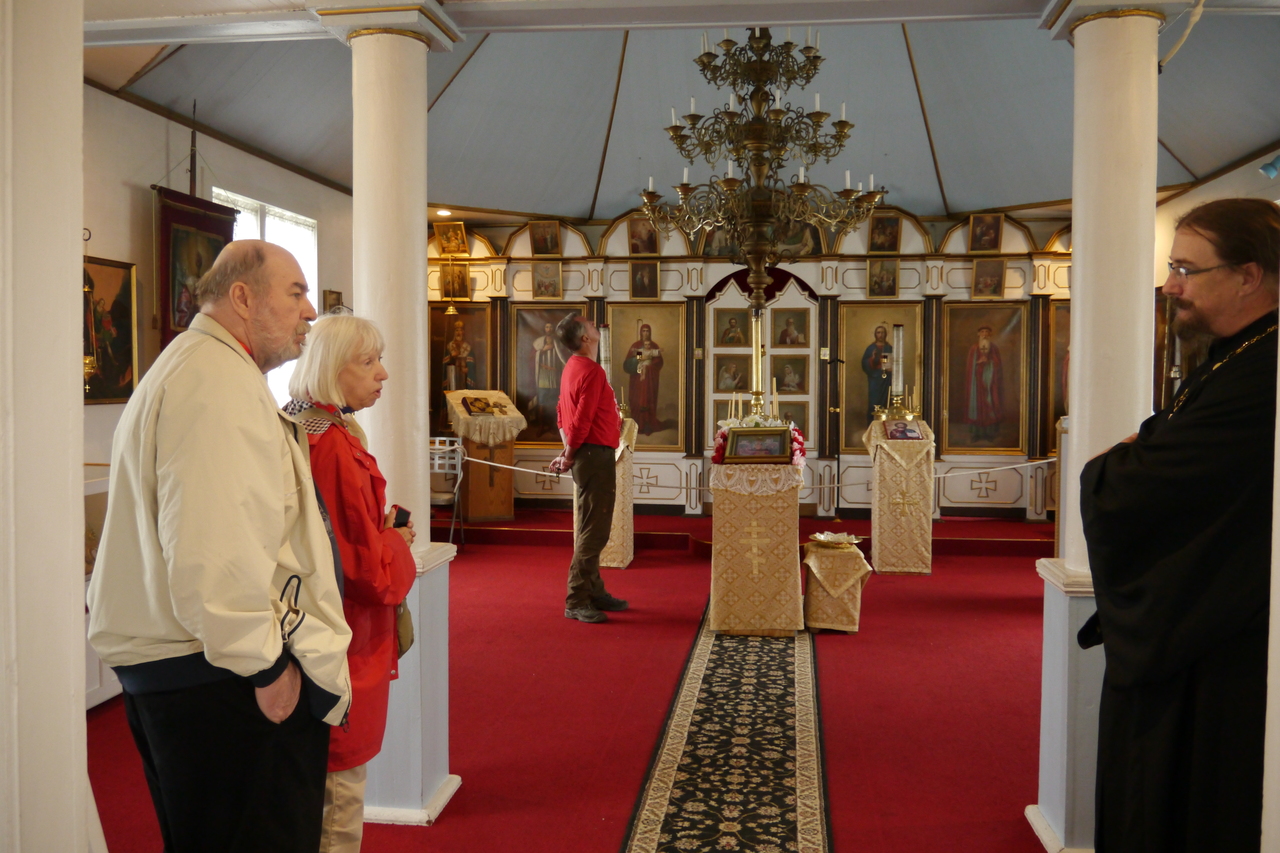
The weather gods are not very kind to us: it keeps raining. We cancel another planned hike and go north to the Denali National Park, the largest park in Alaska and with the highest peak in North America. The mountains and vistas are very beautiful, at least on clear skies. We only see that on the roadside panels because we don't get any further than cloudy skies. There are almost no hiking trails because it is a wilderness park. We decide to take a bus tour of the park to the westernmost point, 43 miles away. Tim, the bus driver does his best to talk and explain the two hour outbound trip full. We see a number of caribou with impressive antlers, mountain sheep and a juggernaut of a grizzly bear. He is not interested in us; he is doing what he likes best in August: eating 270,000 berries a day.
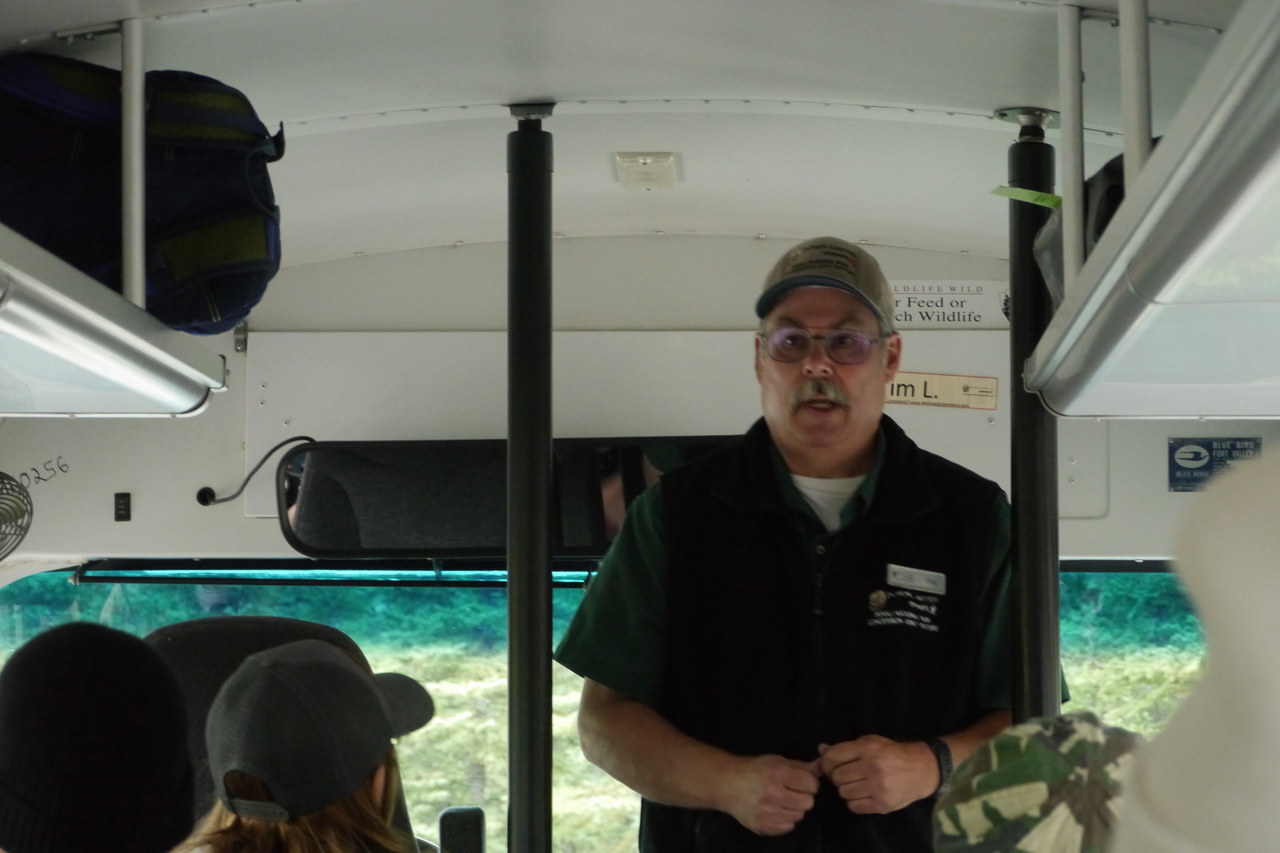
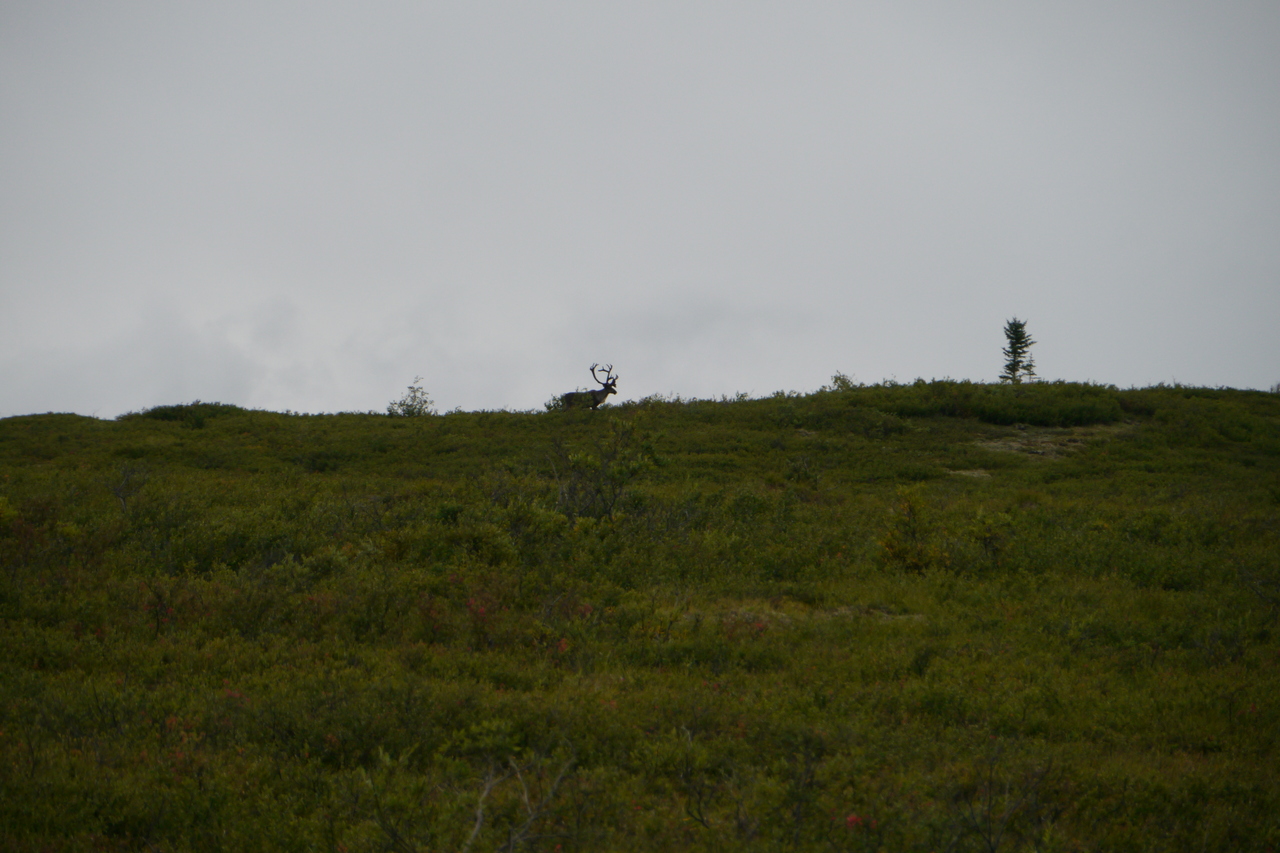
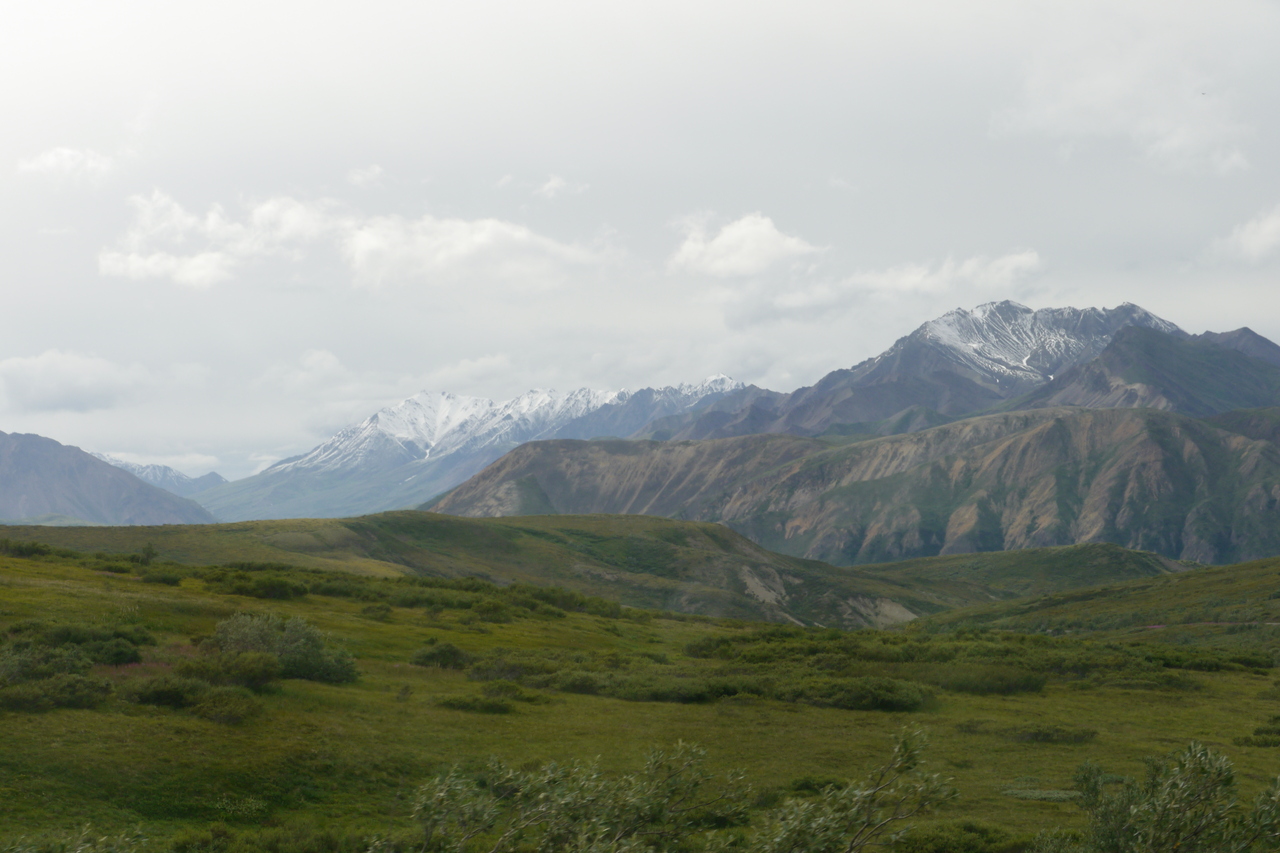
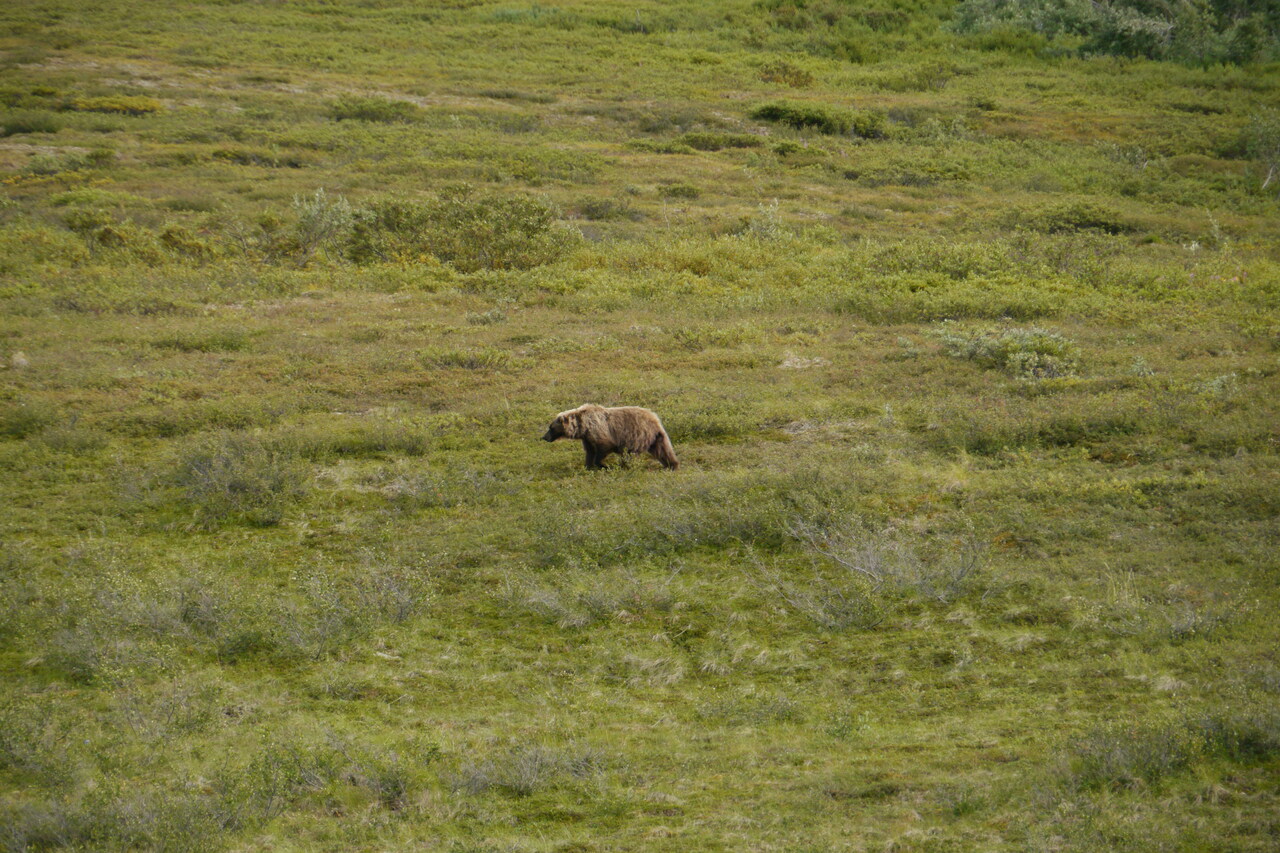
The next night we are camped on top of a hill. The view is magnificent. But the wind has free rein on all sides and after a few hours it feels like we are flying with car and tent into the air. We have to break up at 11:00 pm: get out of the sleeping bag and fold the tent in the very last daylight and flying squalls.
In Fairbanks, I buy some warm clothes. The days, but especially the nights, are very cold. I packed my luggage in June and (thus) have mostly summer clothes with me. We find the bus of Alexander 'Supertramp' McCandless in the local university! Those who don't know him, watch the movie 'Into the wild', a true story. Is also a bit like how we sometimes feel in Alaska: we have now camped wild in nature for 50 days in a row.
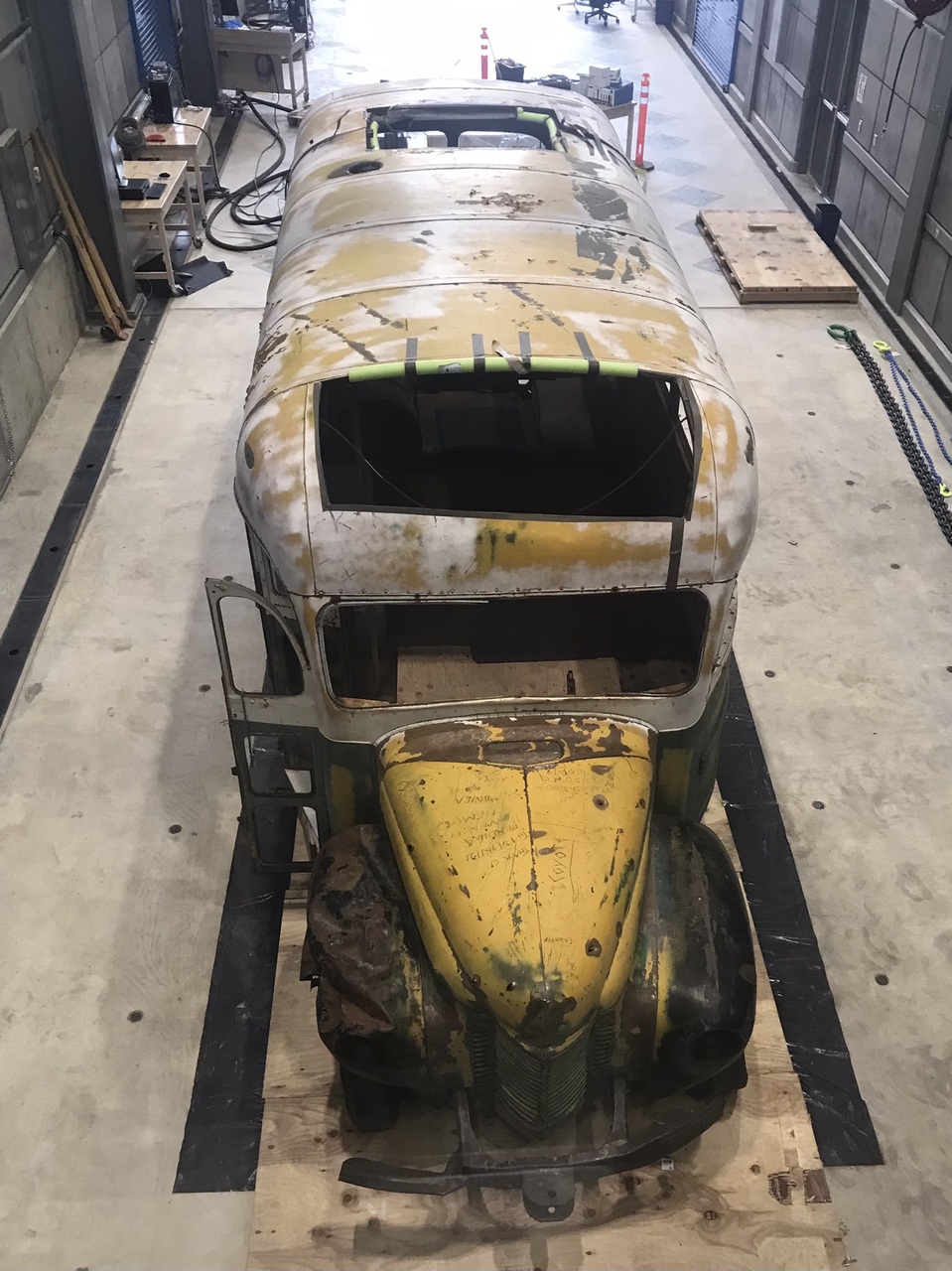
In the evening we meet a couple who recommend the road to Circle, 200 kilometers northwest of Fairbanks. It is a very beautiful road. There is snow on the tops of several passes and the temperature drops below freezing.
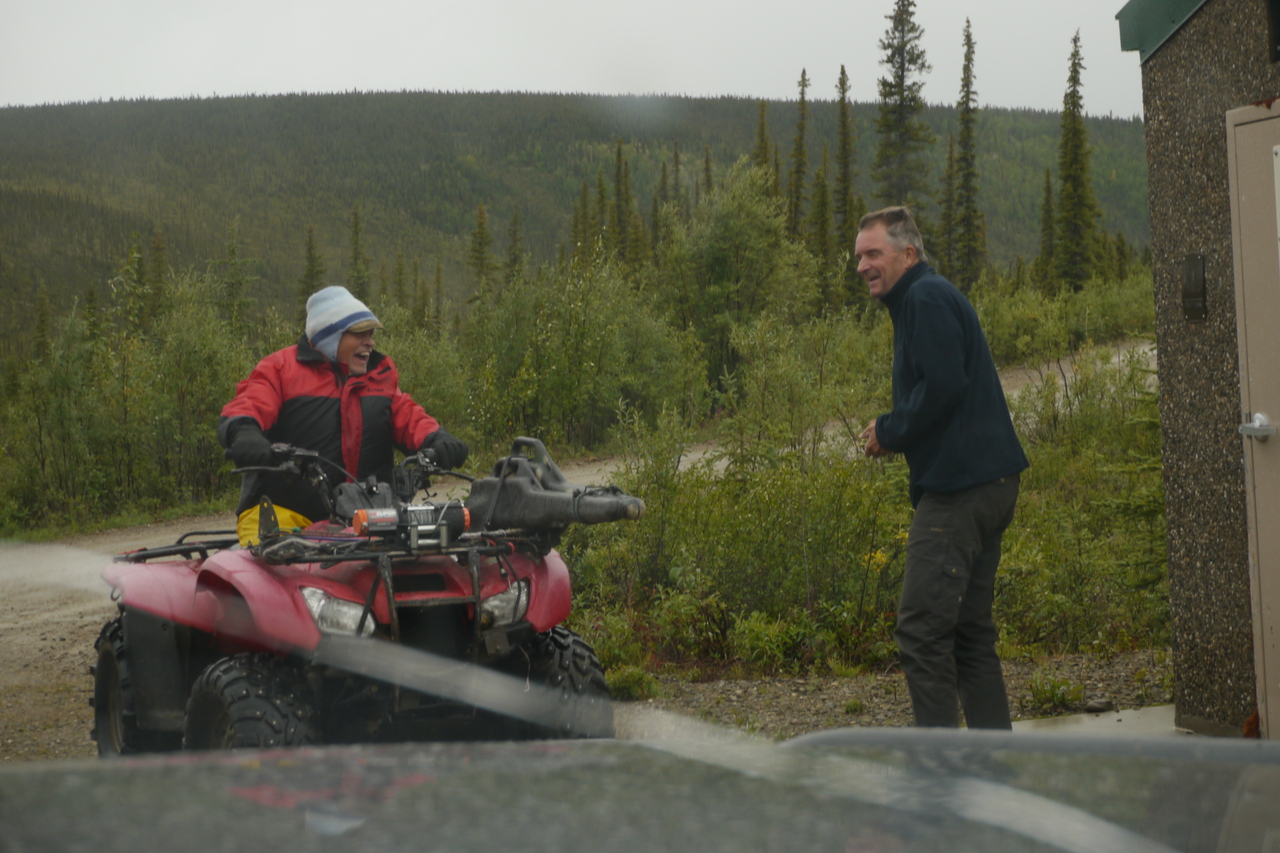
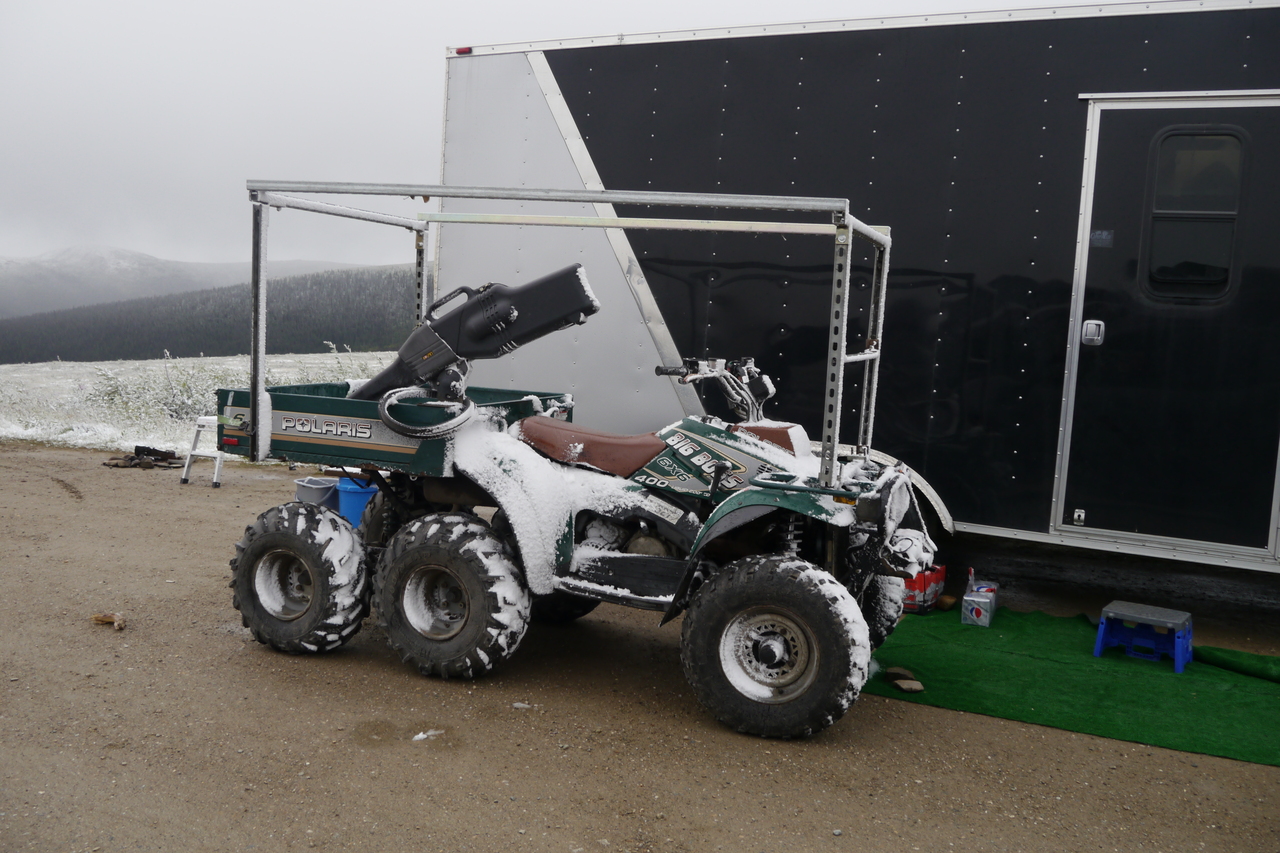
Along the side of the road, hidden between the trees are abandoned settlements because this is where gold was (and still is) sought. Most houses further down the road are on stilts, to protect the permafrost. When we drive to the Yukon River it looks like we are driving through a car cemetery: it is so remote here that towing a broken down car is more expensive than another (used) car.
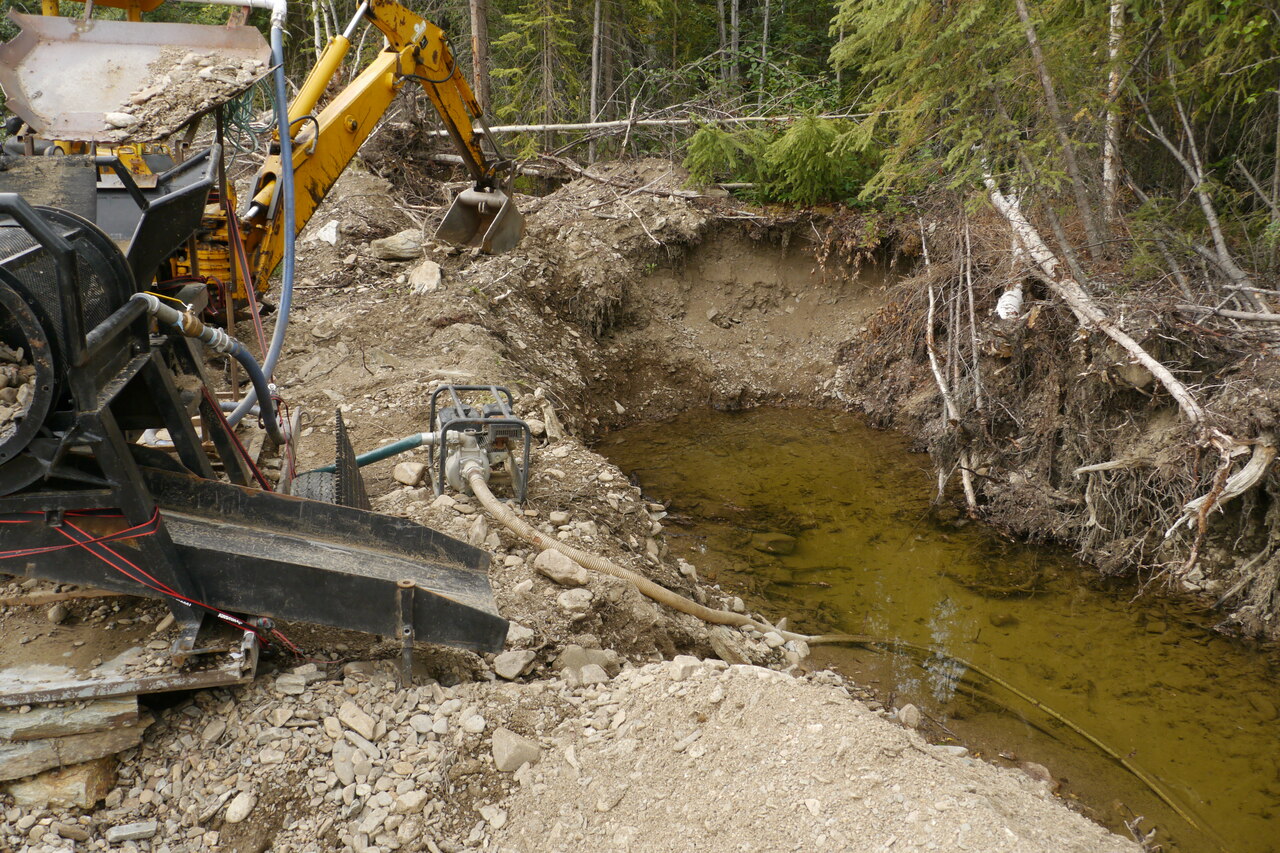
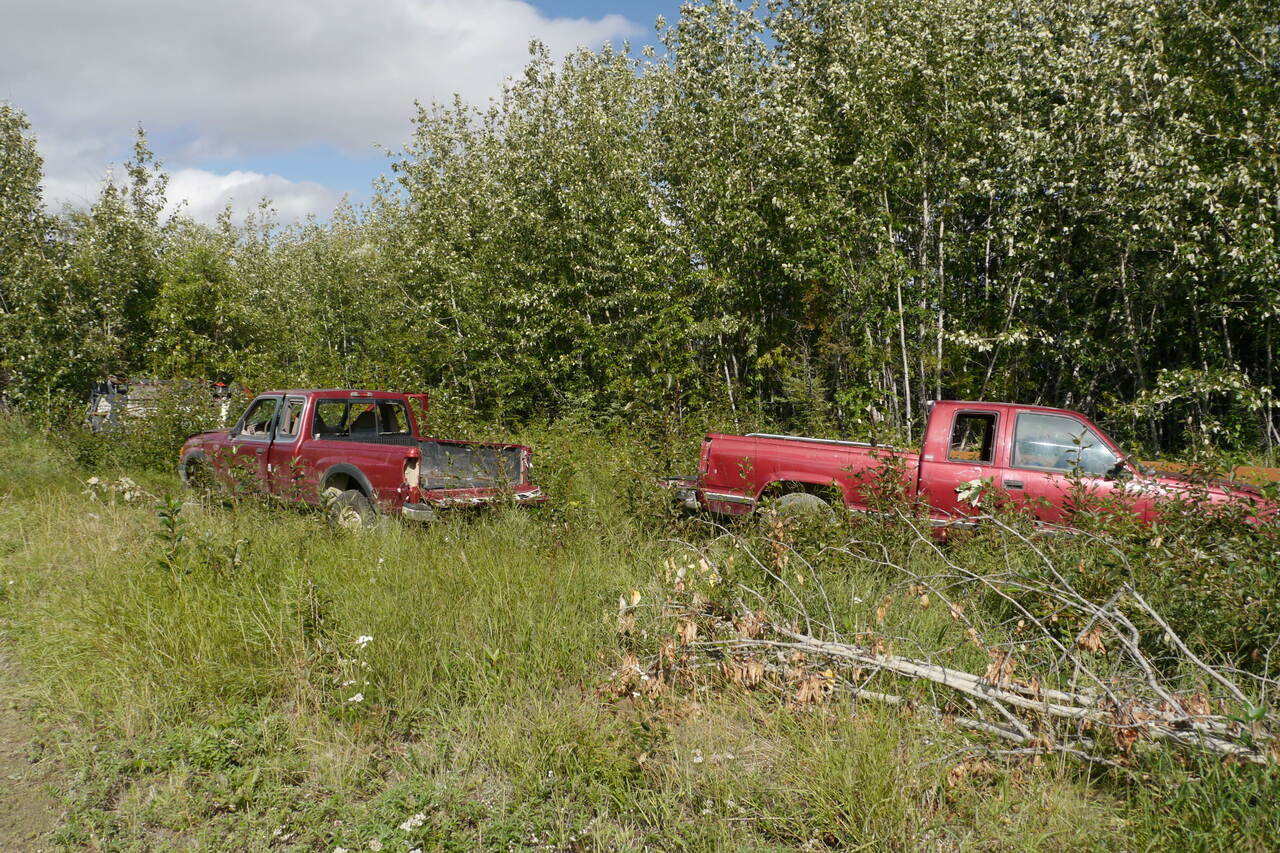
We decide that this is the northernmost point of our long journey. Starting tomorrow or the day after, our trip back towards Europe will begin (by Christmas?).